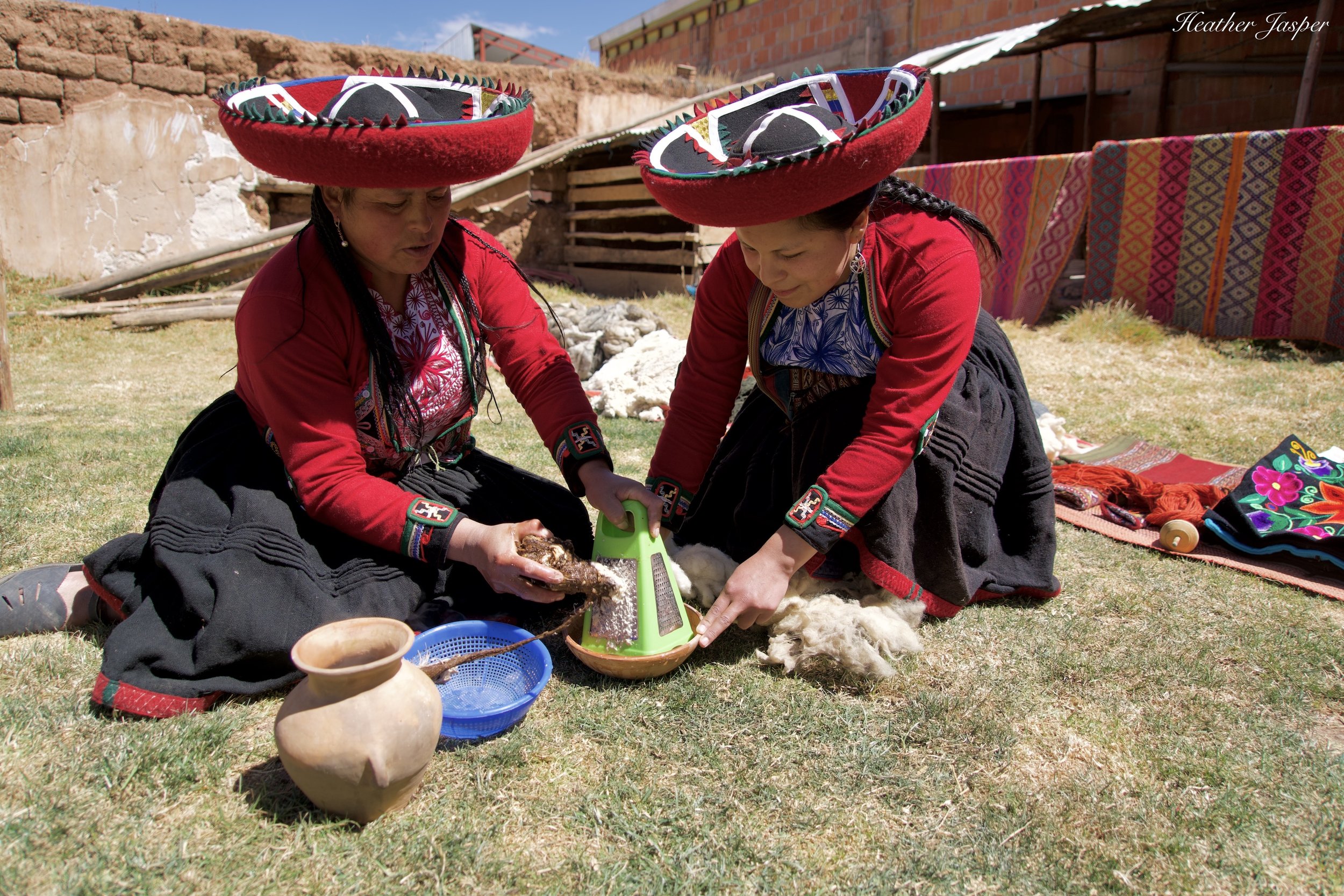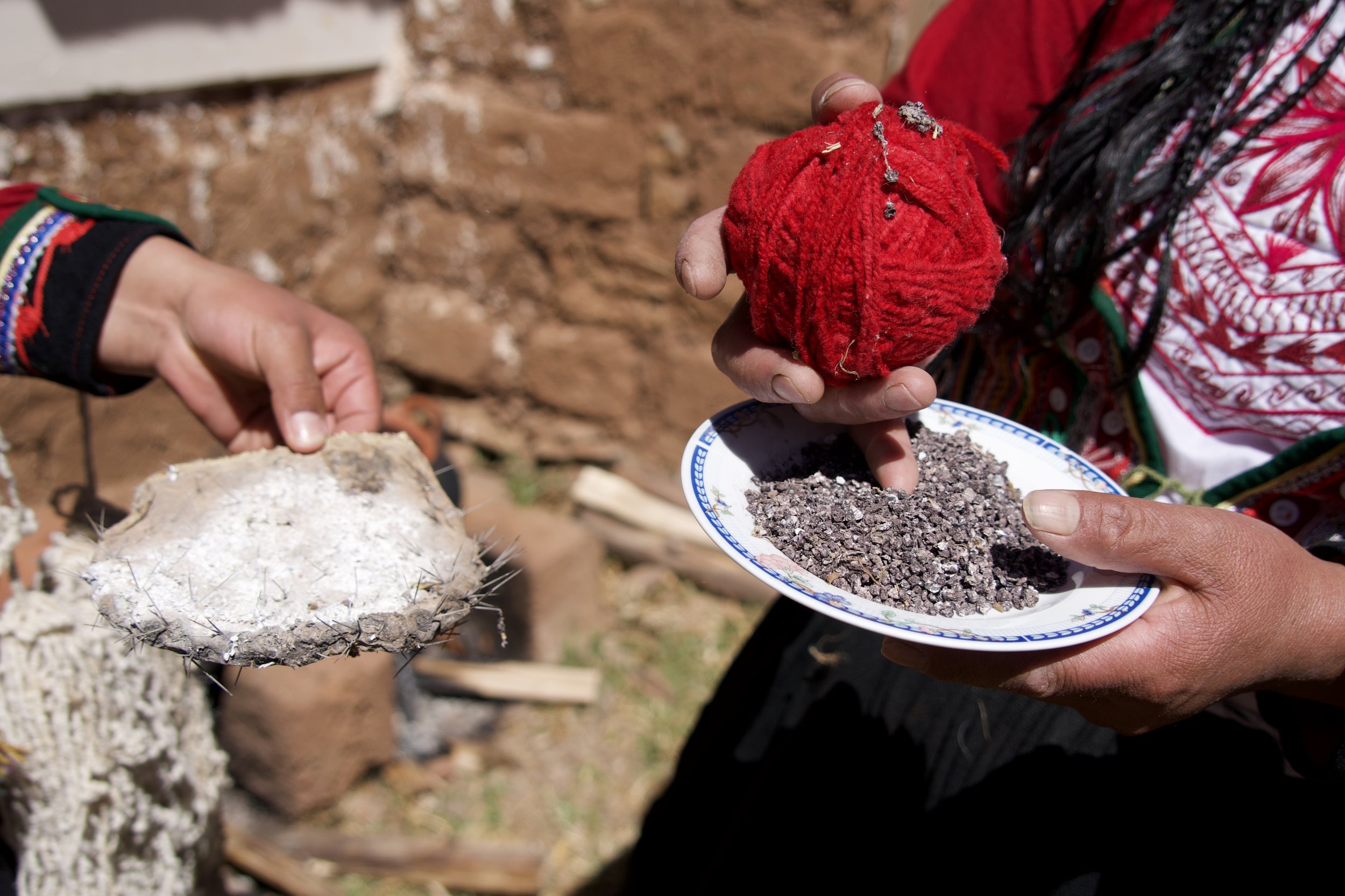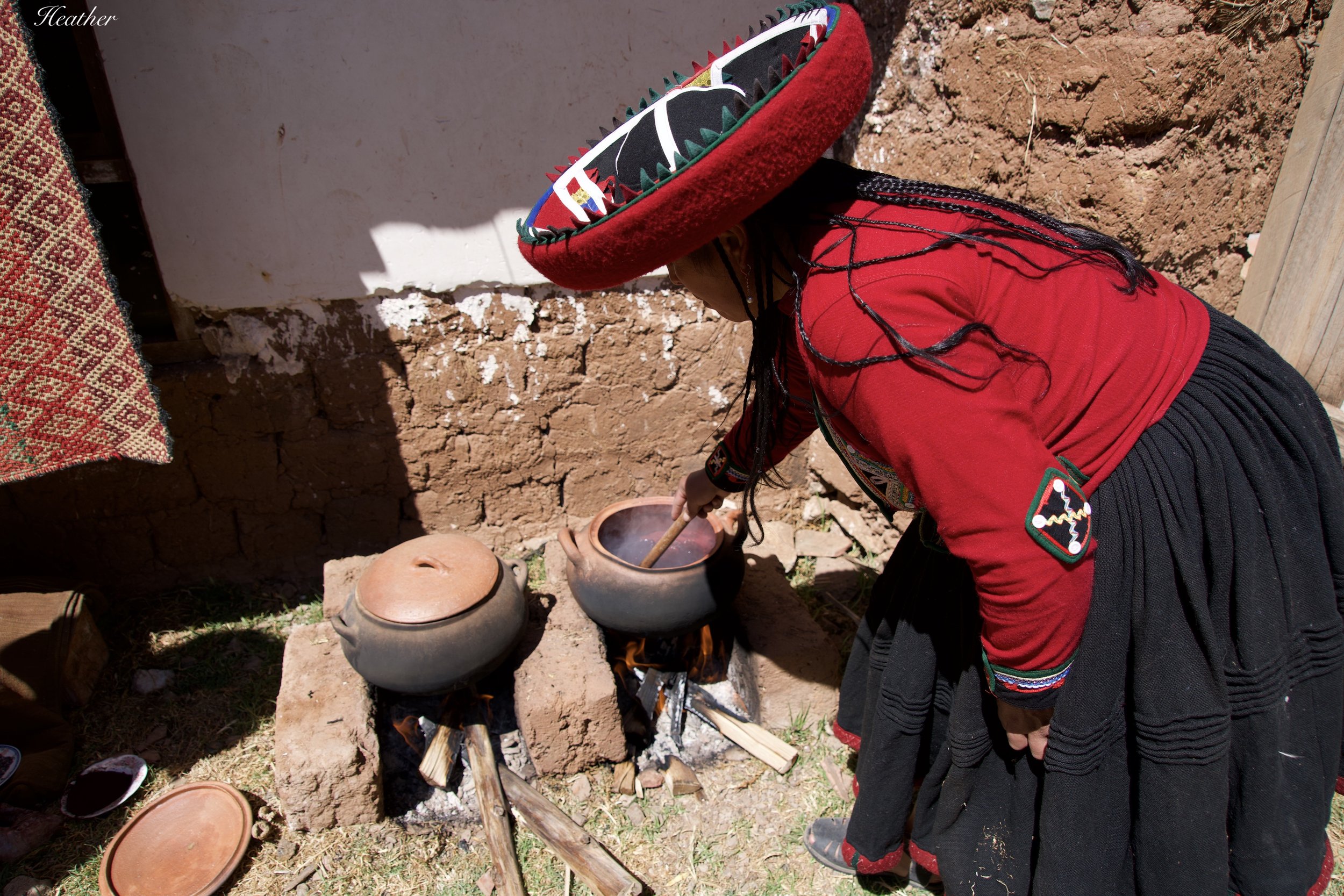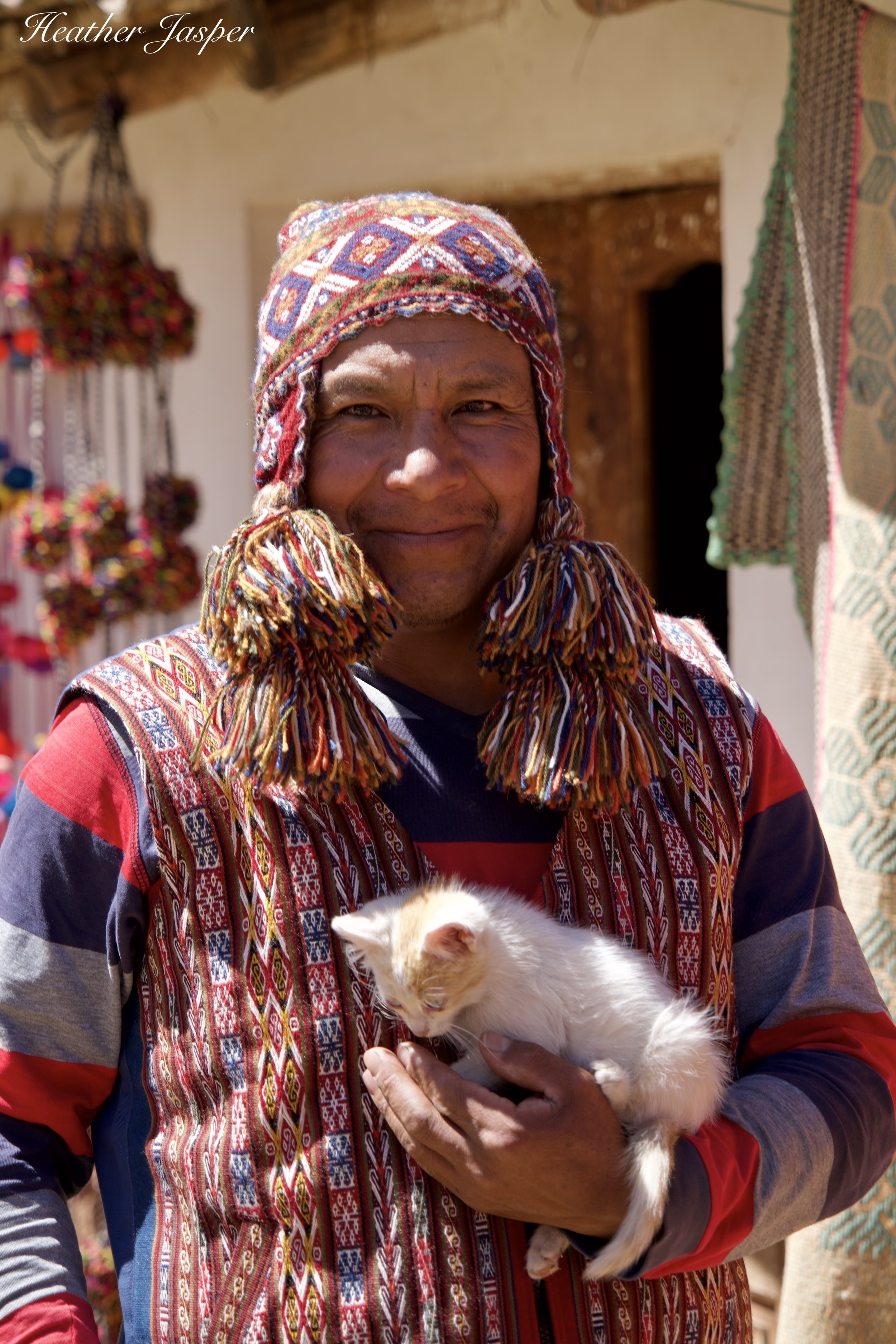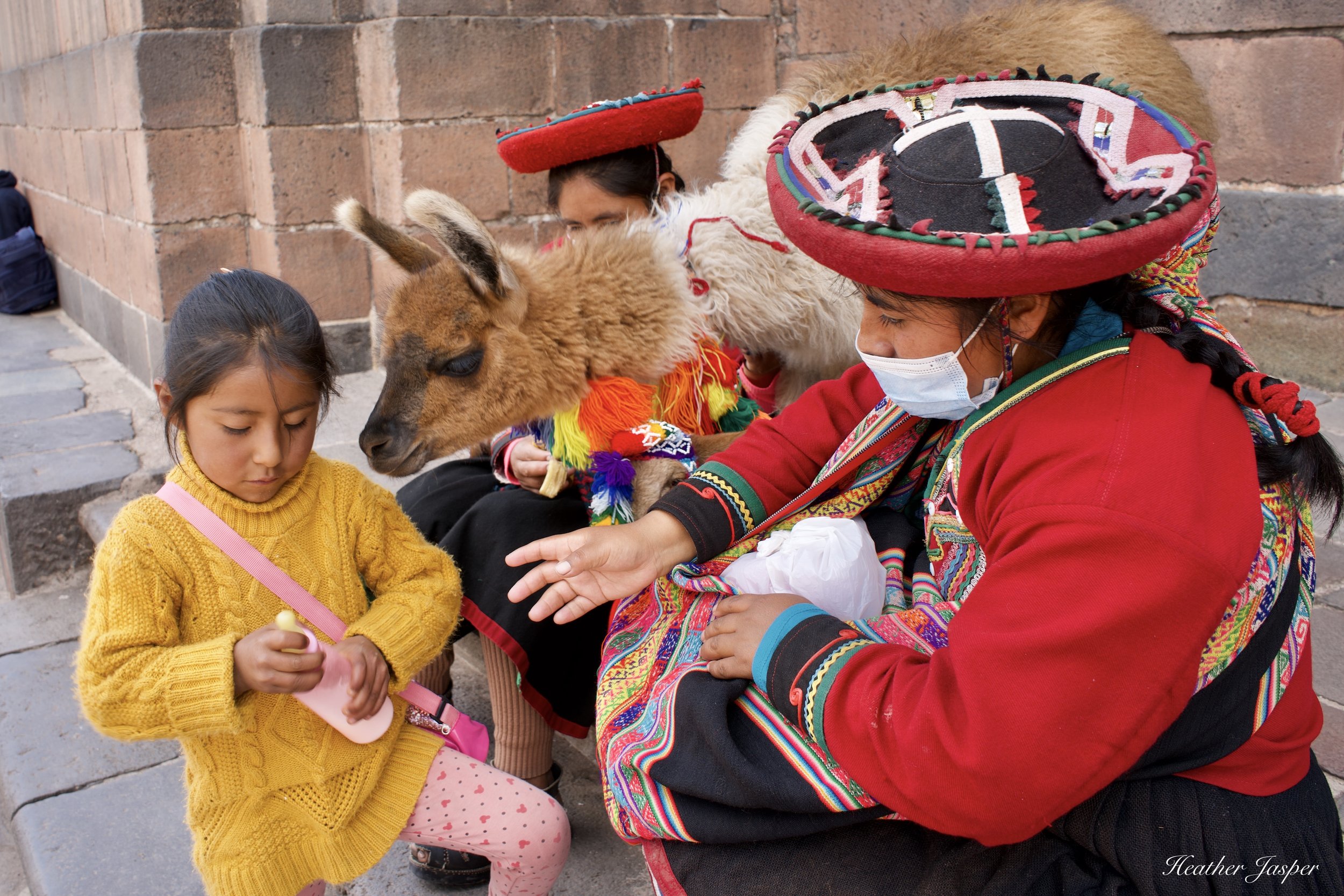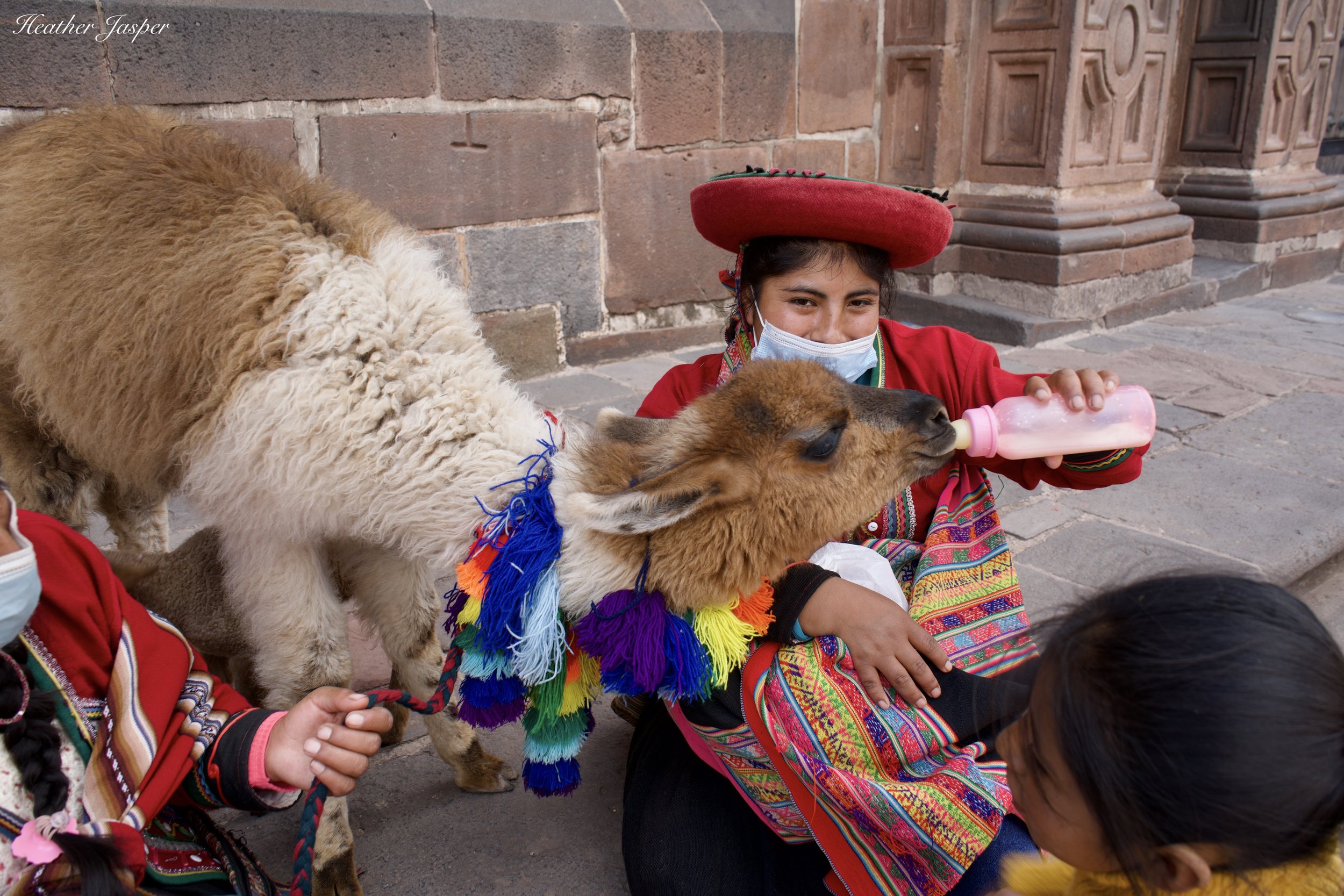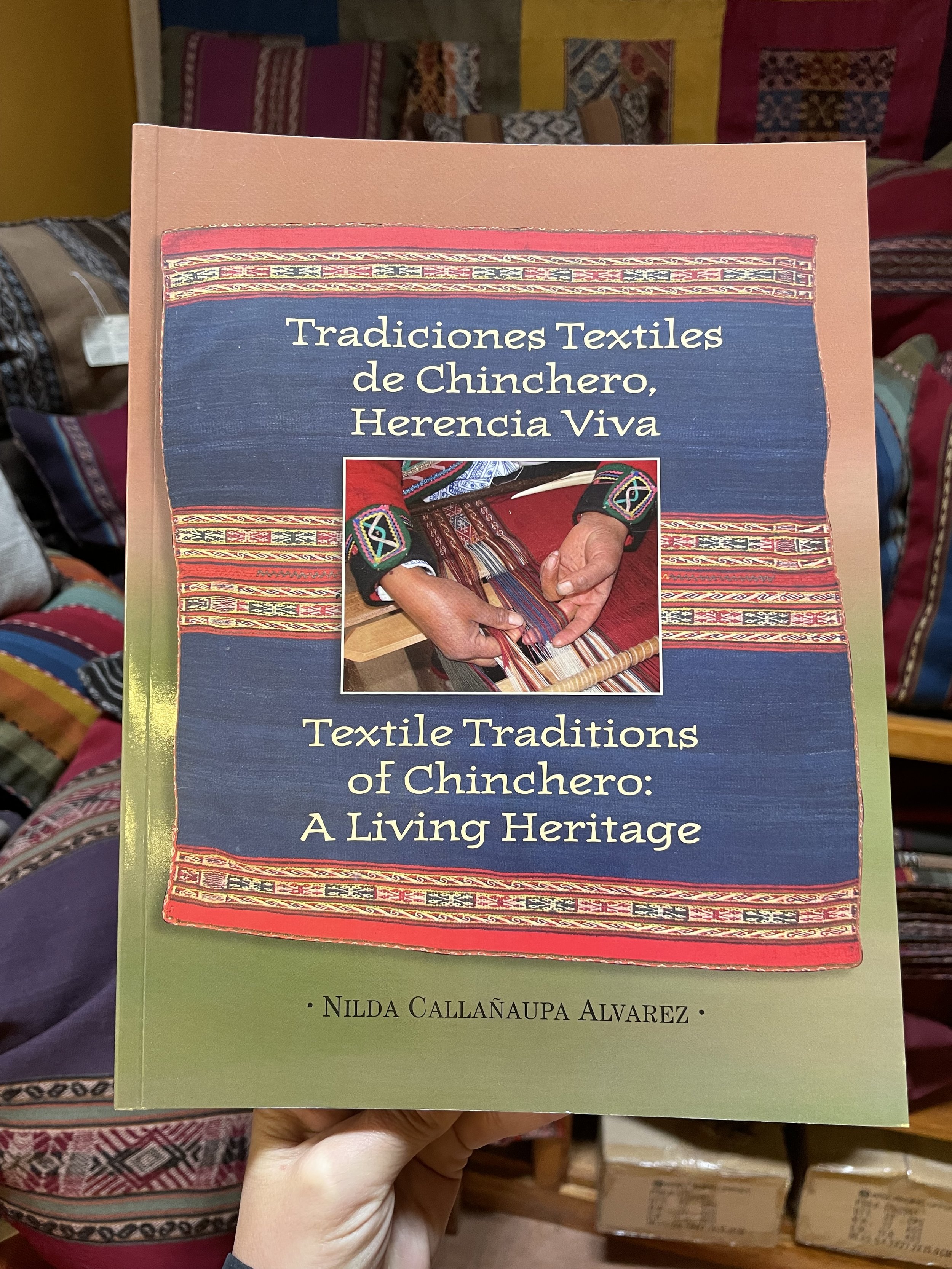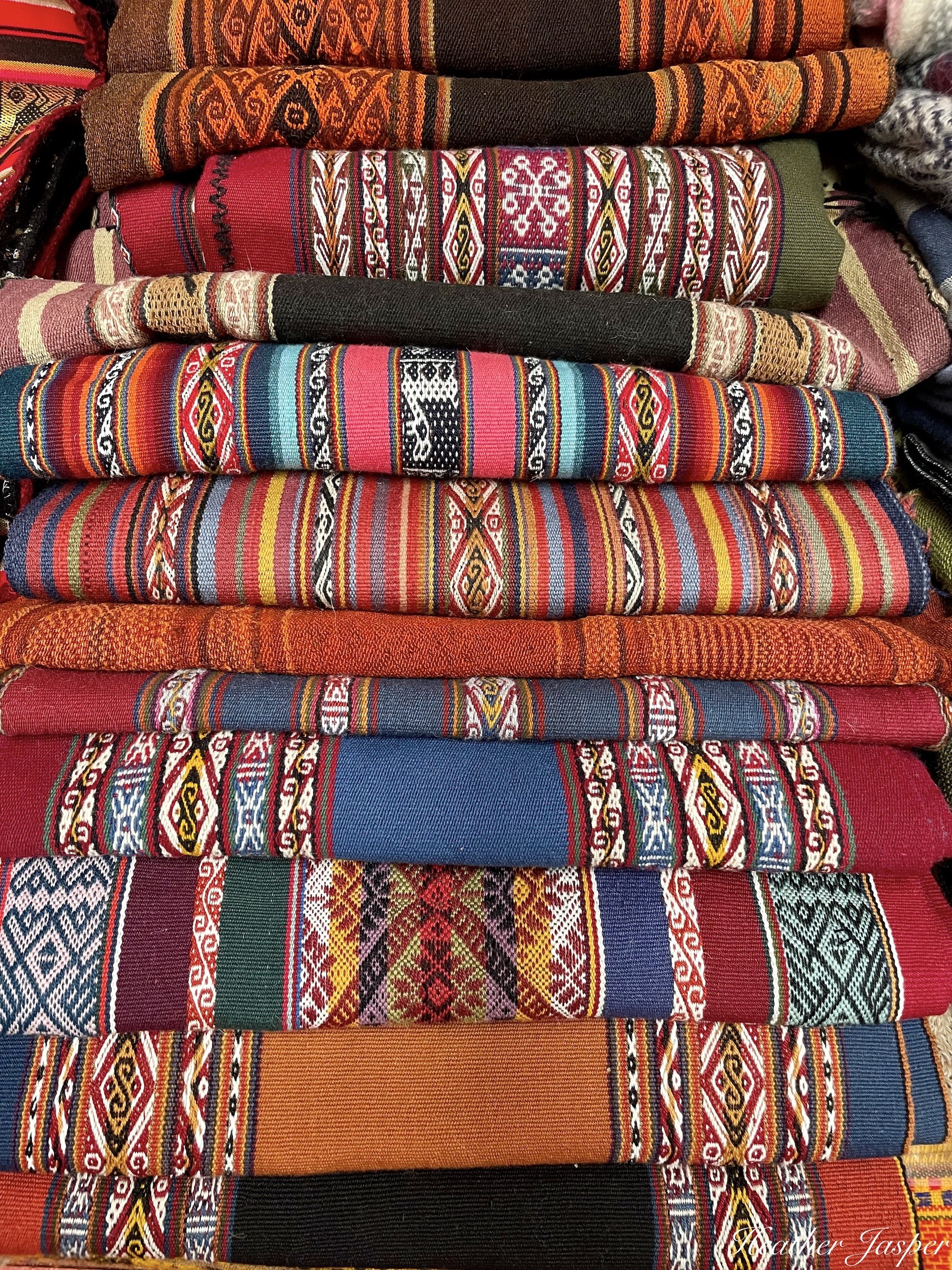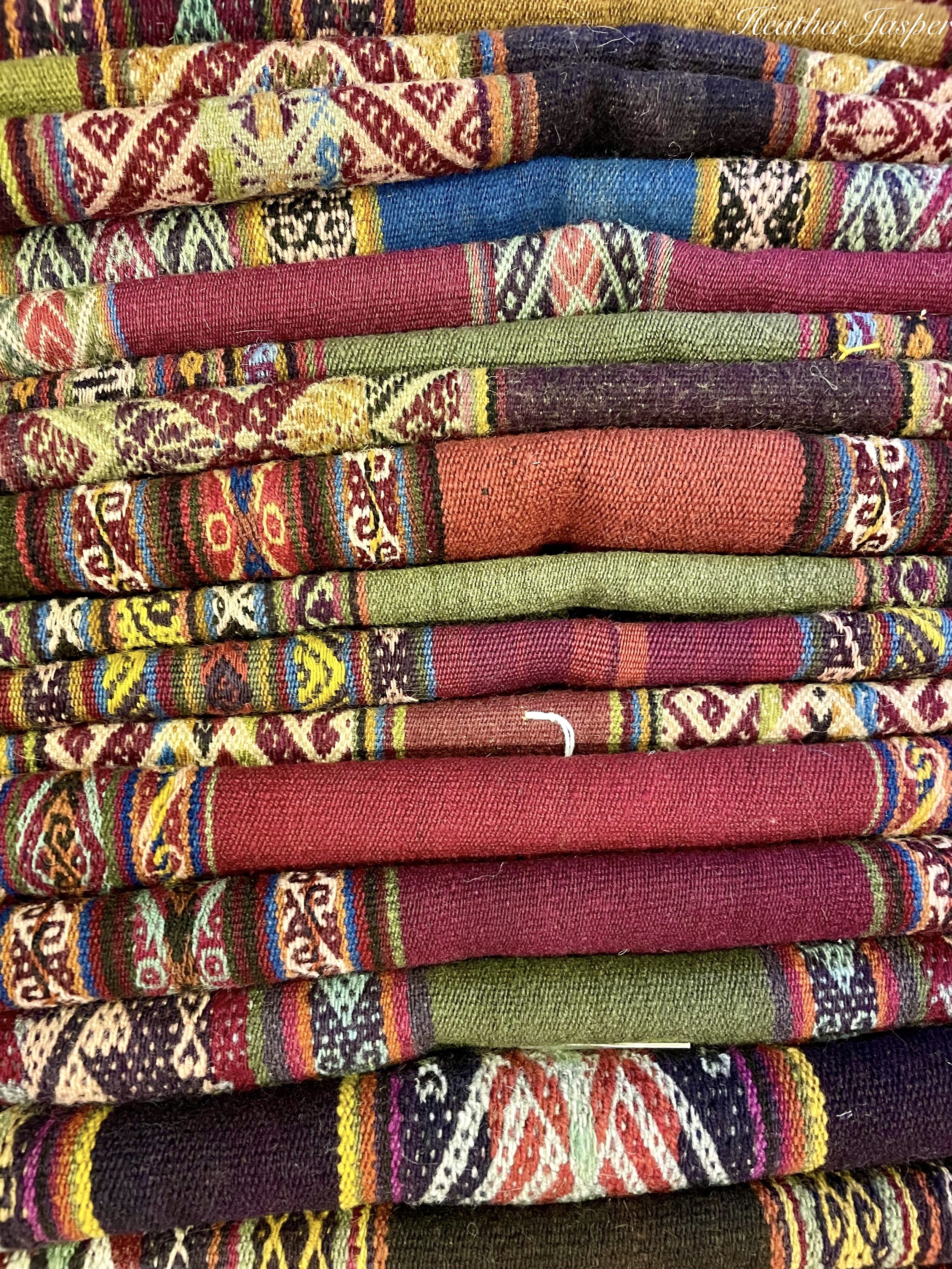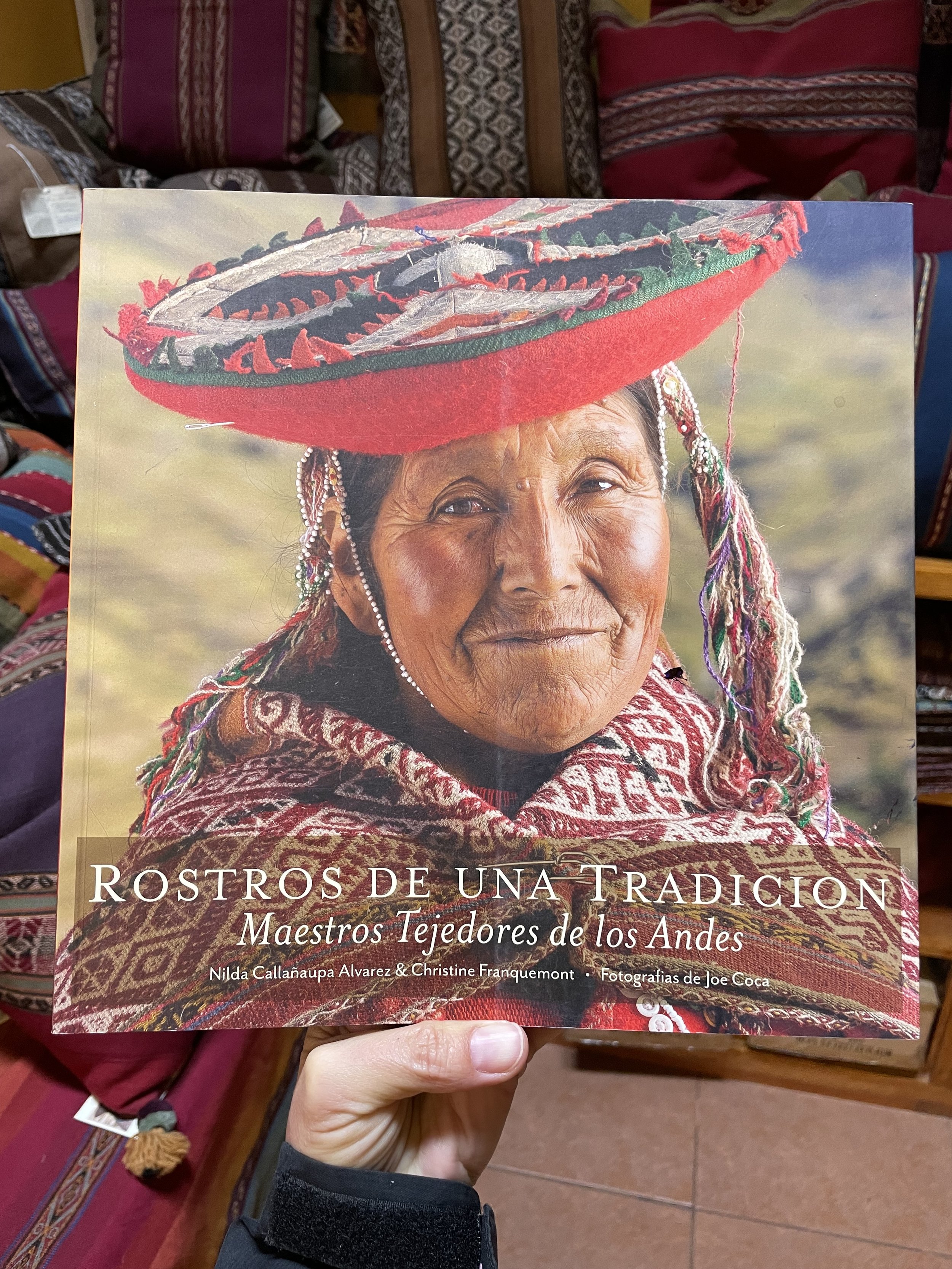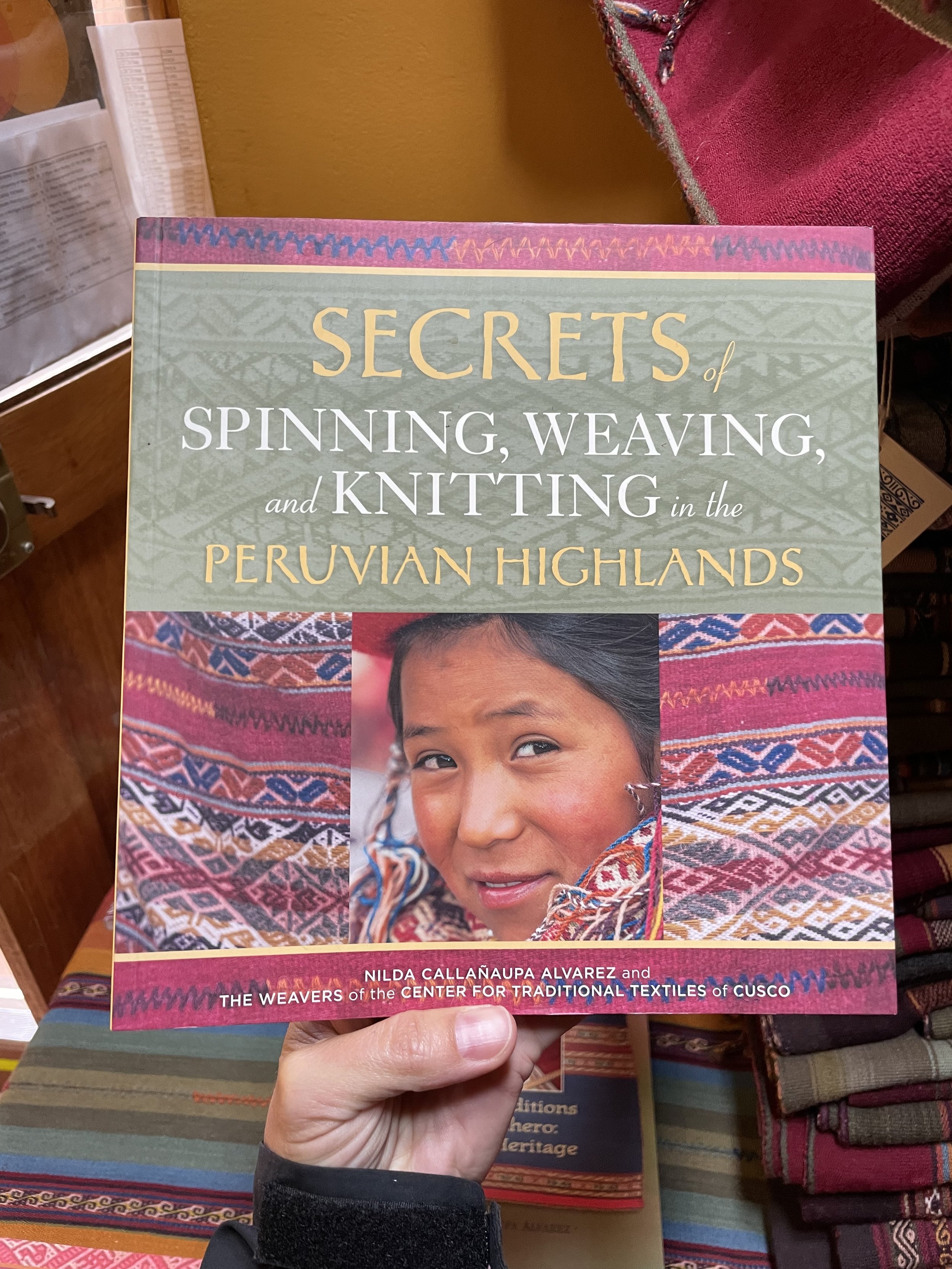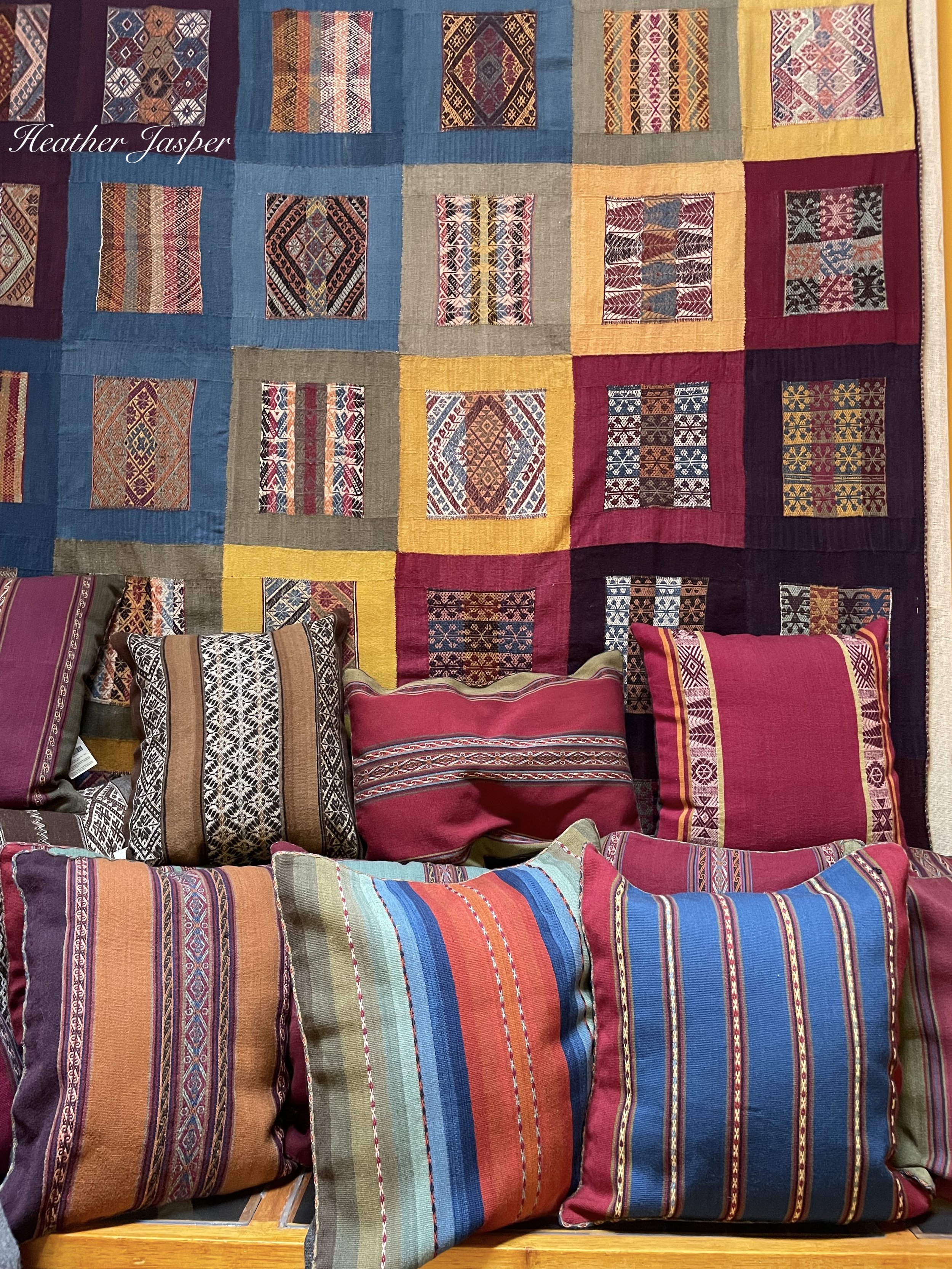Chinchero Weavers
Chinchero is best known for its talented weavers and visiting is one of the best things to do in Cusco!
A visit to Chinchero usually takes you to a weaving demonstration. This is where women dressed in the traditional Chinchero round red hats, black skirts and embroidered red jackets show you how they make textiles.
The women of Chinchero
These women live in Umasbamba, a village that’s part of the district of Chinchero. It’s on the other side of Lake Piuray from the town of Chinchero.
Erlinda and her daughter Karen let me take photos of every step of the process. This is almost exactly what you’ll see in any good weaving demonstration in Chinchero.
I’m not spoiling anything here. The experience in person is so cool that no amount of photos and explanation in this blog could ruin the experience for you. You really do have to go see it for yourself. Chinchero is in the Cusco region, less than an hour from the city of Cusco. Supporting these talented artisans, who are preserving their ancestral weaving techniques, is one of the best ways travelers can help keep their indigenous culture alive.
Contact them at +51 999 544 051 to arrange a weaving demonstration with Erlinda & Karen!
Natural shampoo
You’ll see piles of freshly sheared wool, usually just as dirty as the sheep themselves. A woman will show you a chunk of saqta root the size of her fist and will grate it with a cheese grater into a clay dish of hot water.
Cleaning the wool
She’ll show you how it bubbles just like shampoo and how immediately it turns dirty wool to a perfect white.
During a demonstration, a woman like Karen will show you how they spin the raw wool into yarn, then you’ll get to learn about the dying process.
You’ll see dishes with leaves and all kinds of things used to make natural dyes. There’s always a cactus with little bugs called cochineal that leave a white powder all over the cactus. A woman will pick a bug off the cactus, roll it in her hand to get the white powder off, then squish it and show you the deep red stain in her palm.
Cochineal is a parasite that lives on cactus
The cochineal is 80% carmine and makes a deep red dye that can be blended with things like lime juice to make an infinite number of shades of red, pink, and orange.
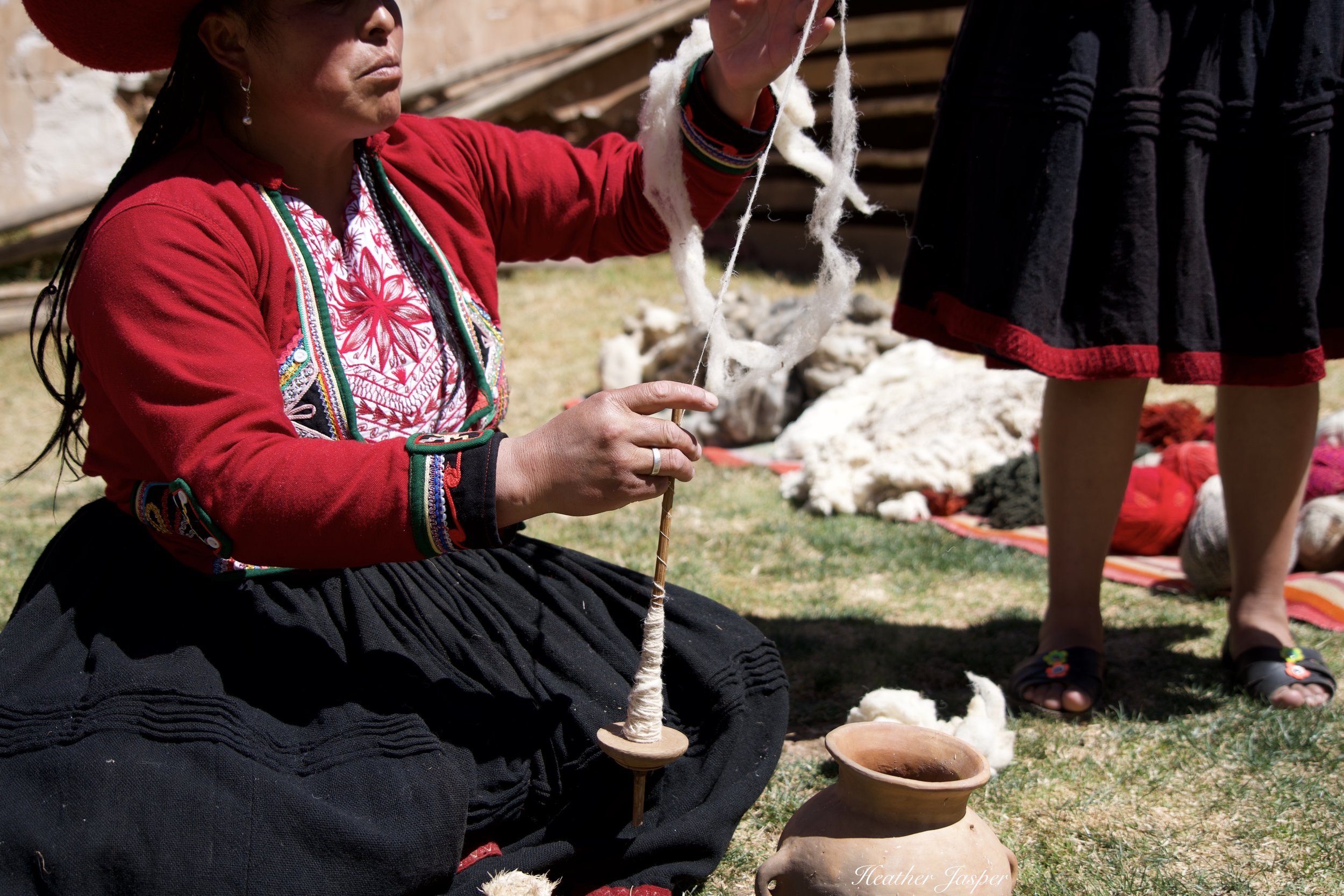
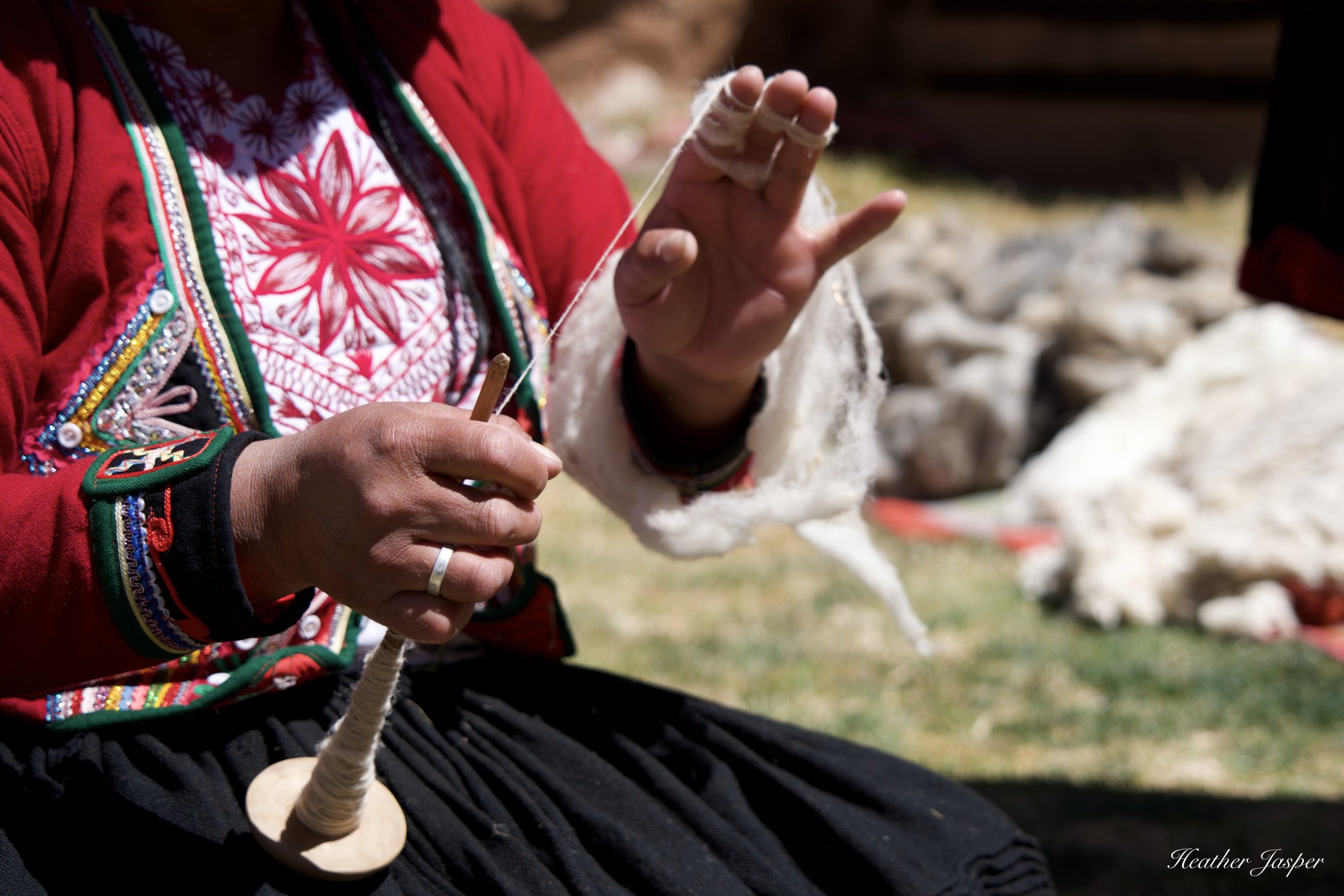
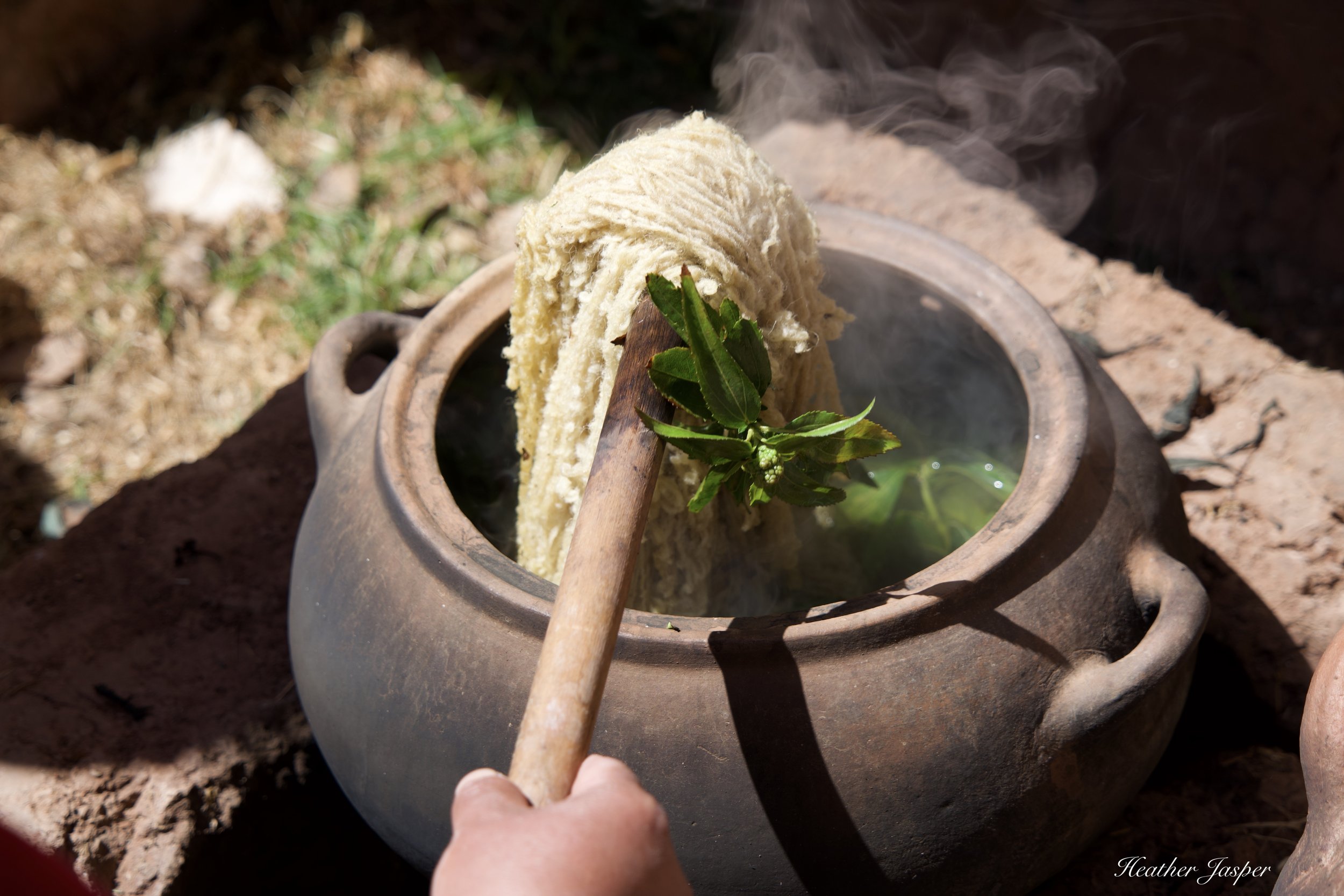
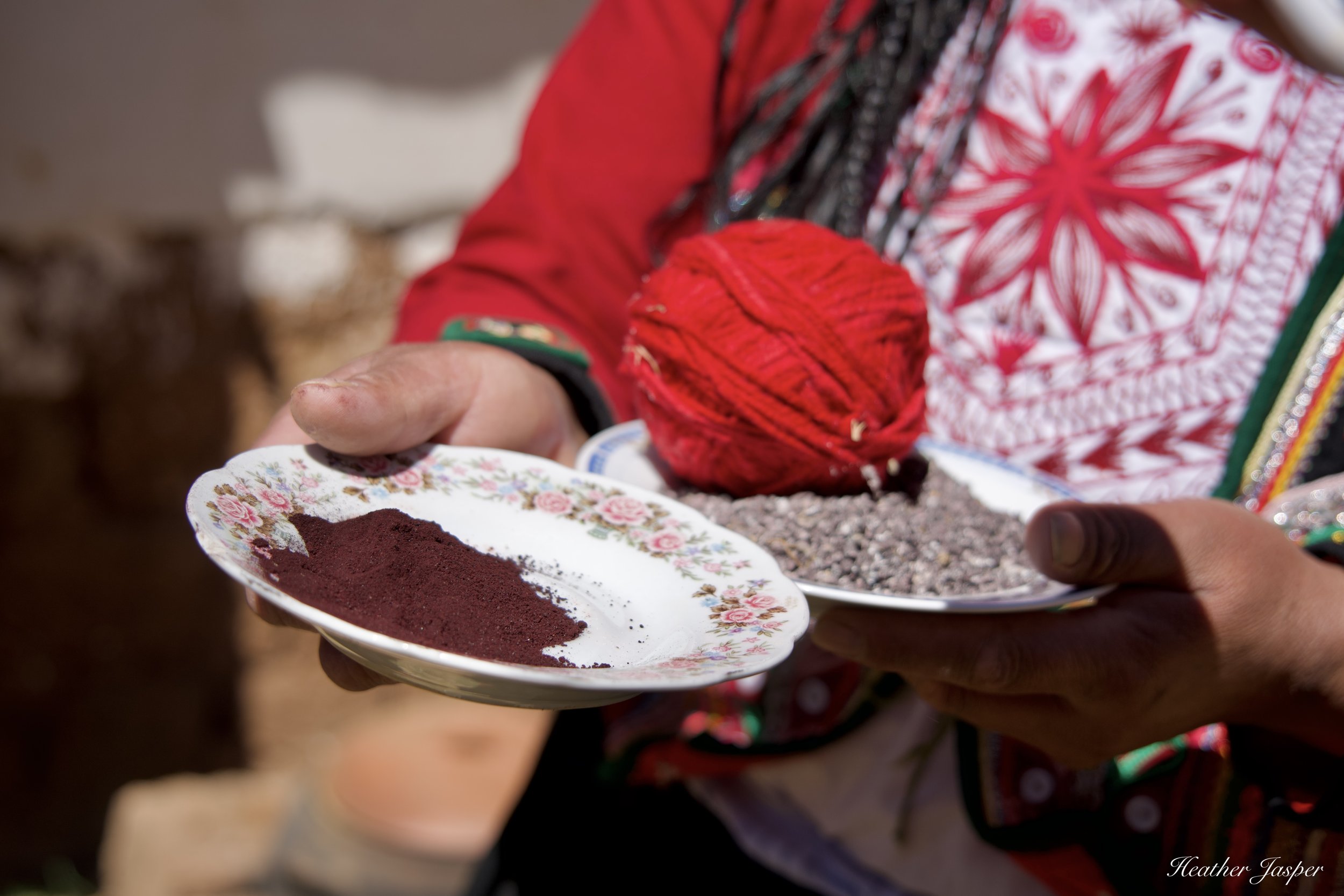
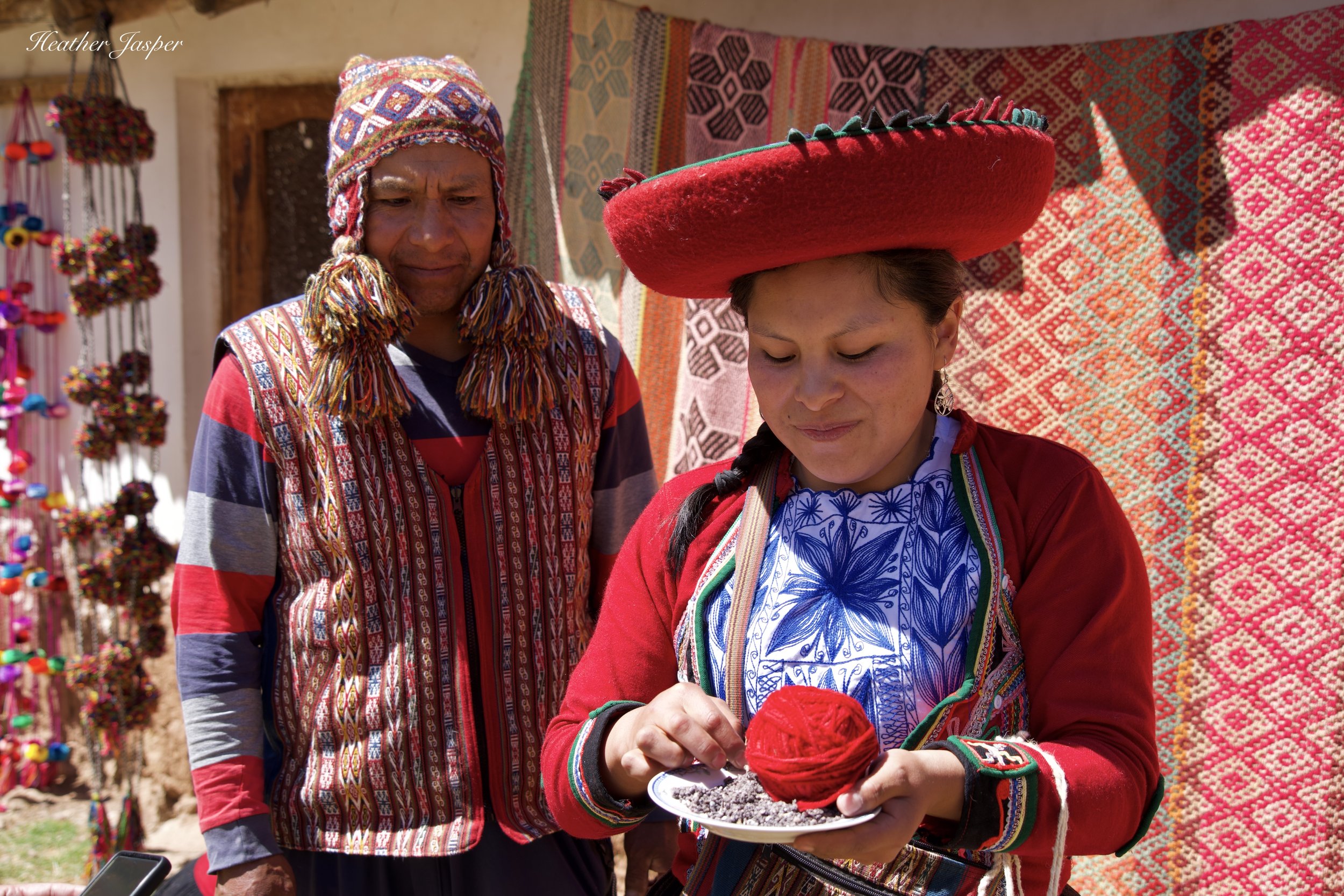
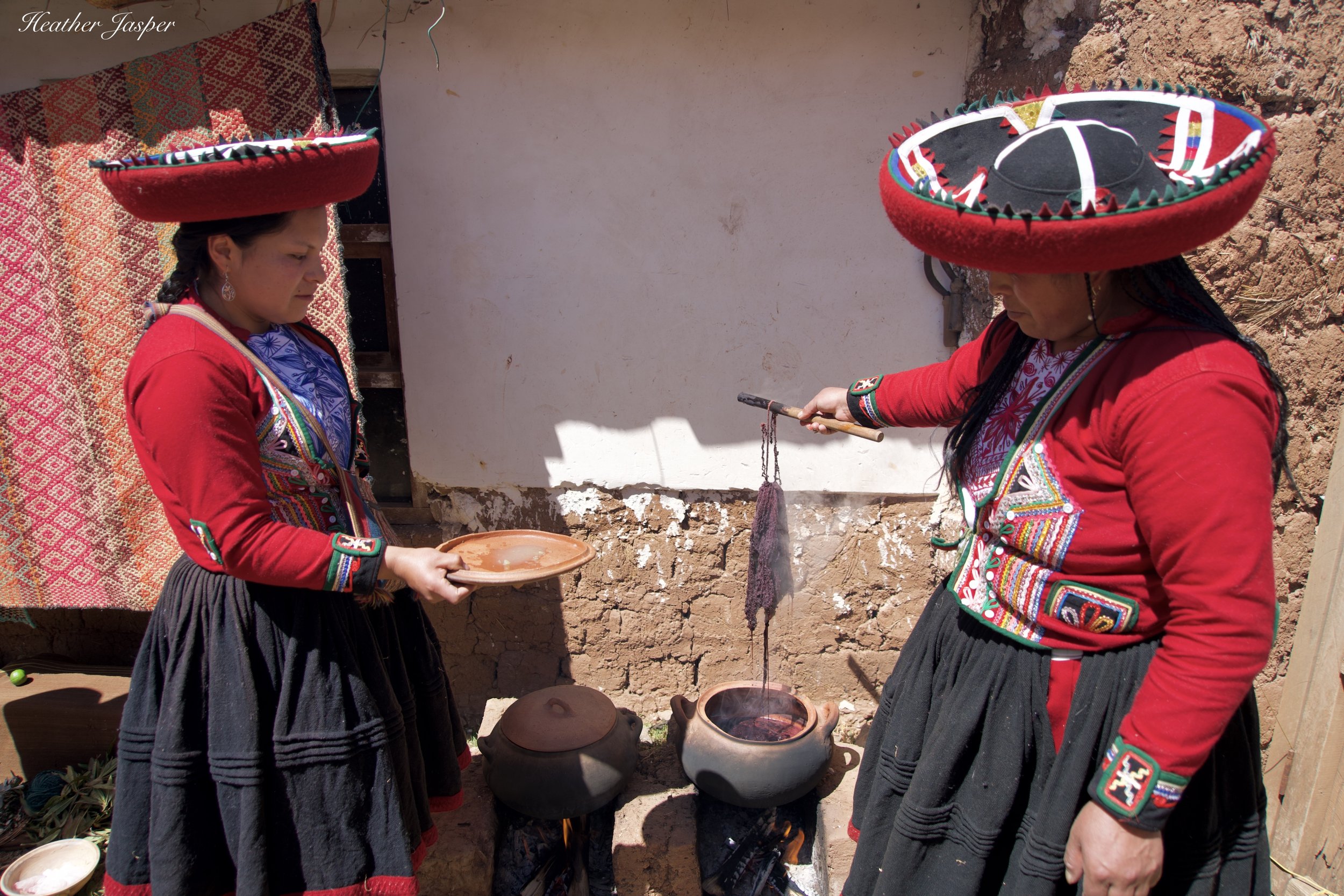
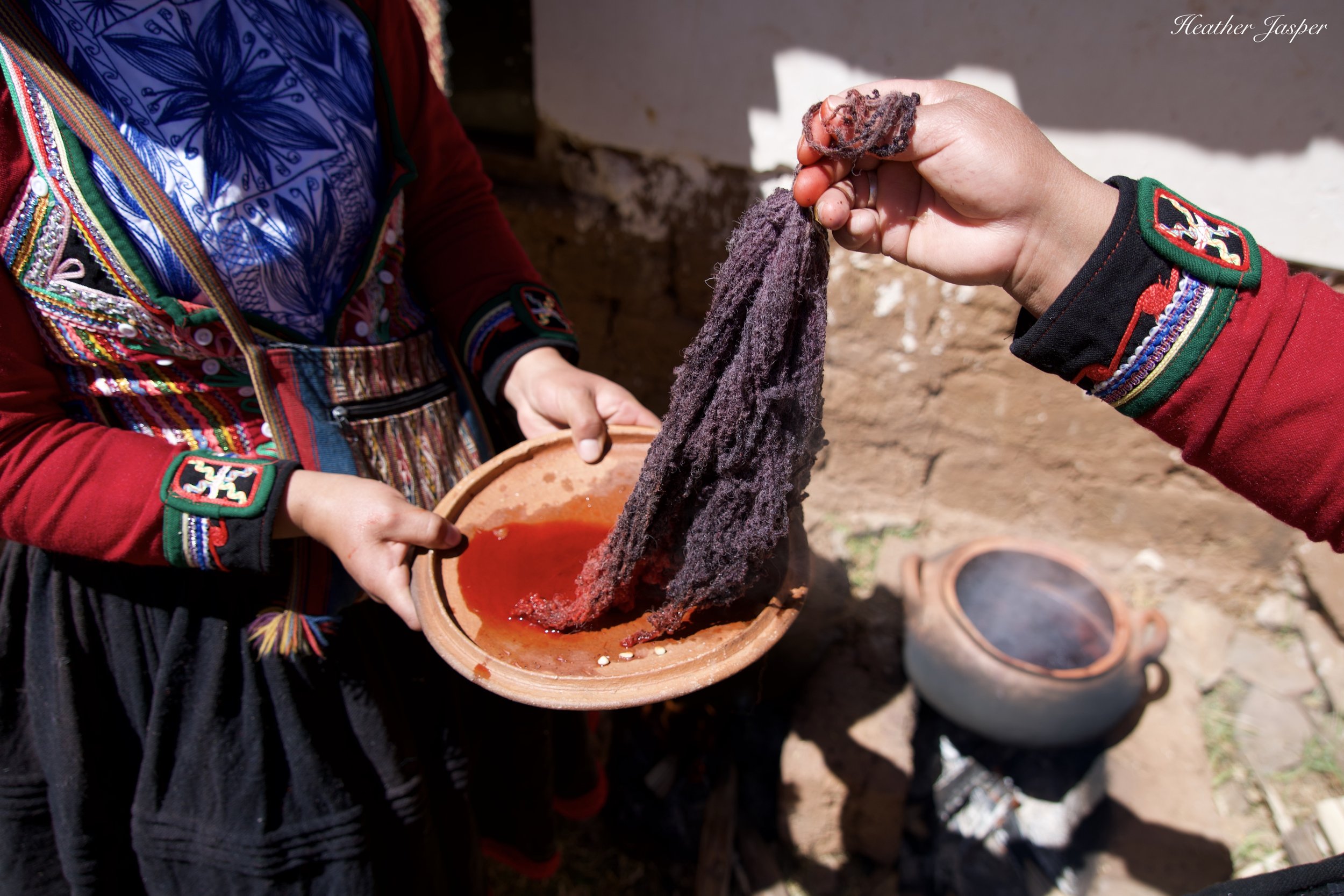

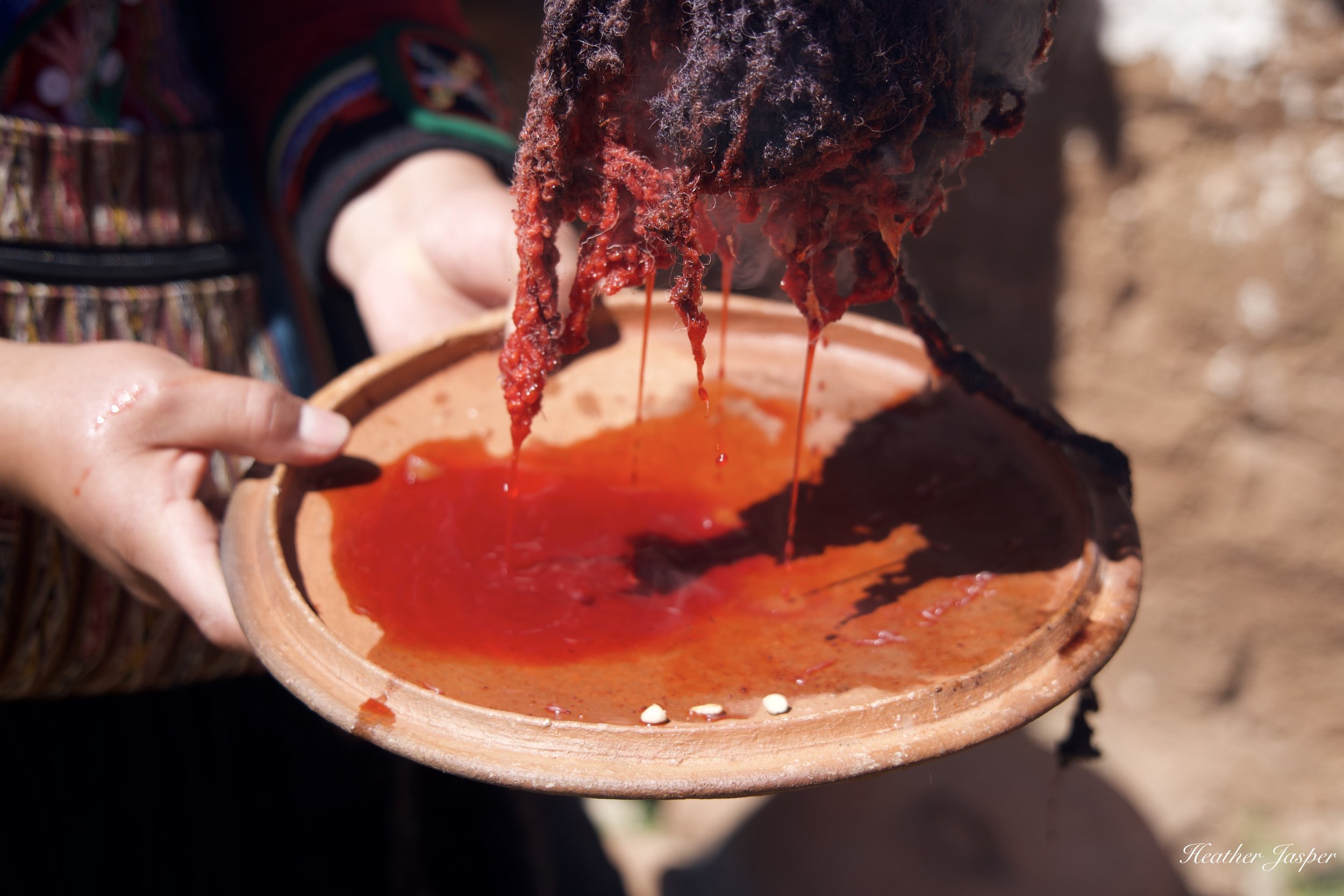
Making natural dye
Then you’ll be taken to a few small woodburning adobe stoves, each with a clay pot of boiling water on it. Some of the pots will have leaves and one will always have powder made from dried cochineal bugs.
Dying yarn
They’ll take skeins of white handspun yarn and dip them in each pot, showing you how quickly the dyes work.
I’ve seen that demonstration at least a dozen times since my first visit to Chinchero in 2013.
It’s just as fascinating every time and I always have more questions. I can’t begin to count how many times I’ve visited Chinchero in the past ten years. It has so much more than textiles – though that’s what it’s most famous for.
Chinchero has a fantastic market, a beautiful and historic church, Inca ruins, is the trailhead for Poc Poc waterfall and one of the trails to Huchuy Q’oqso.
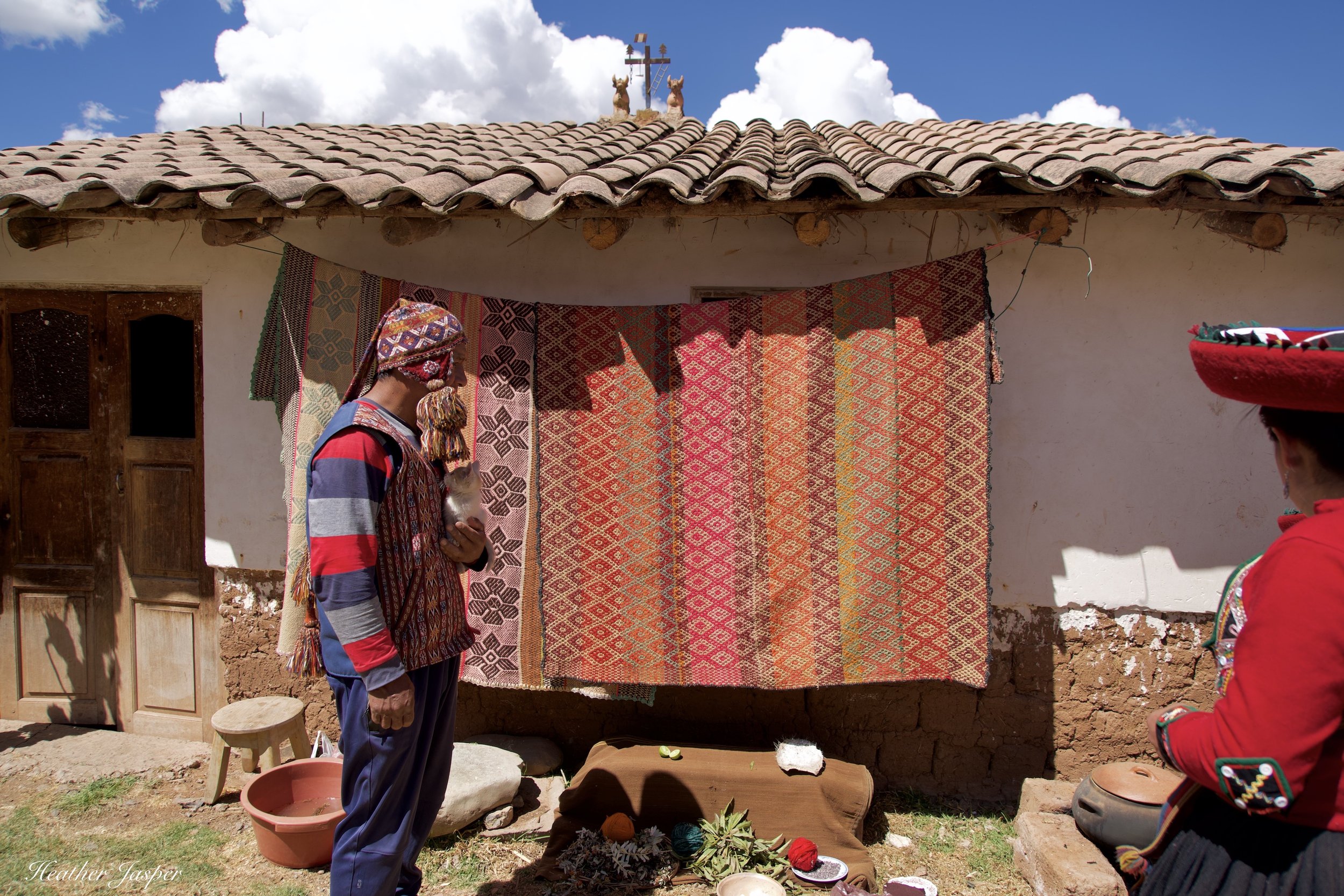
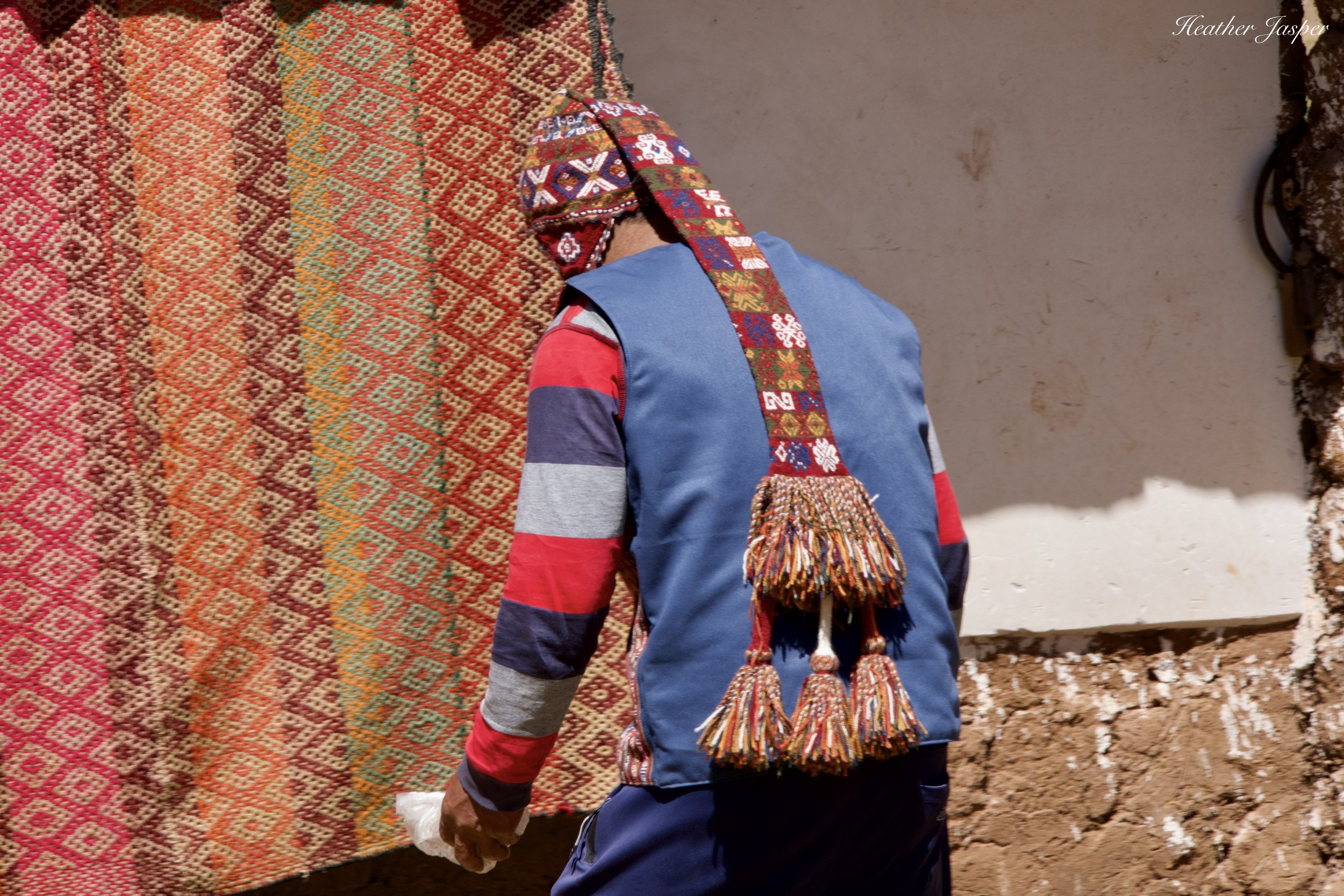
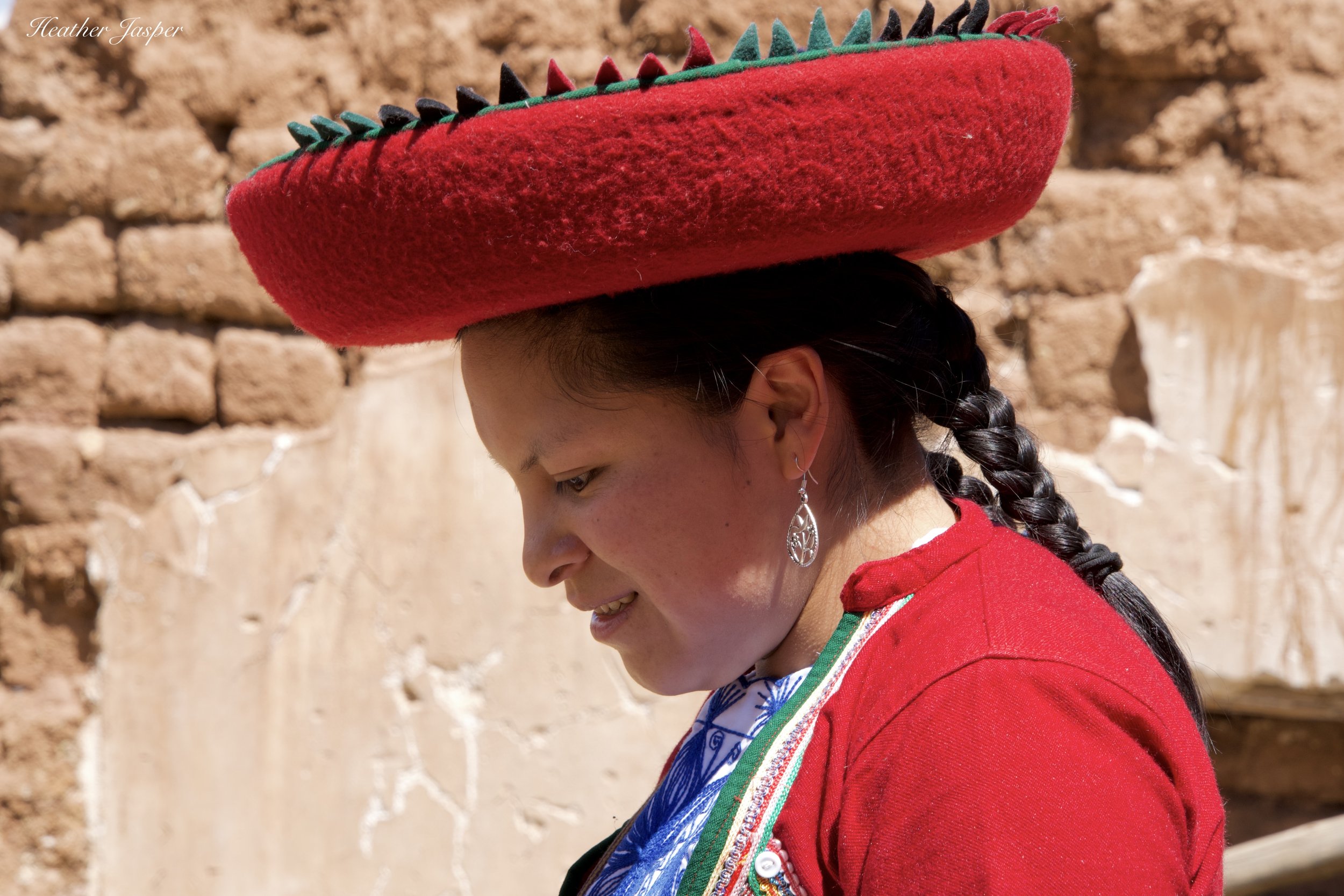
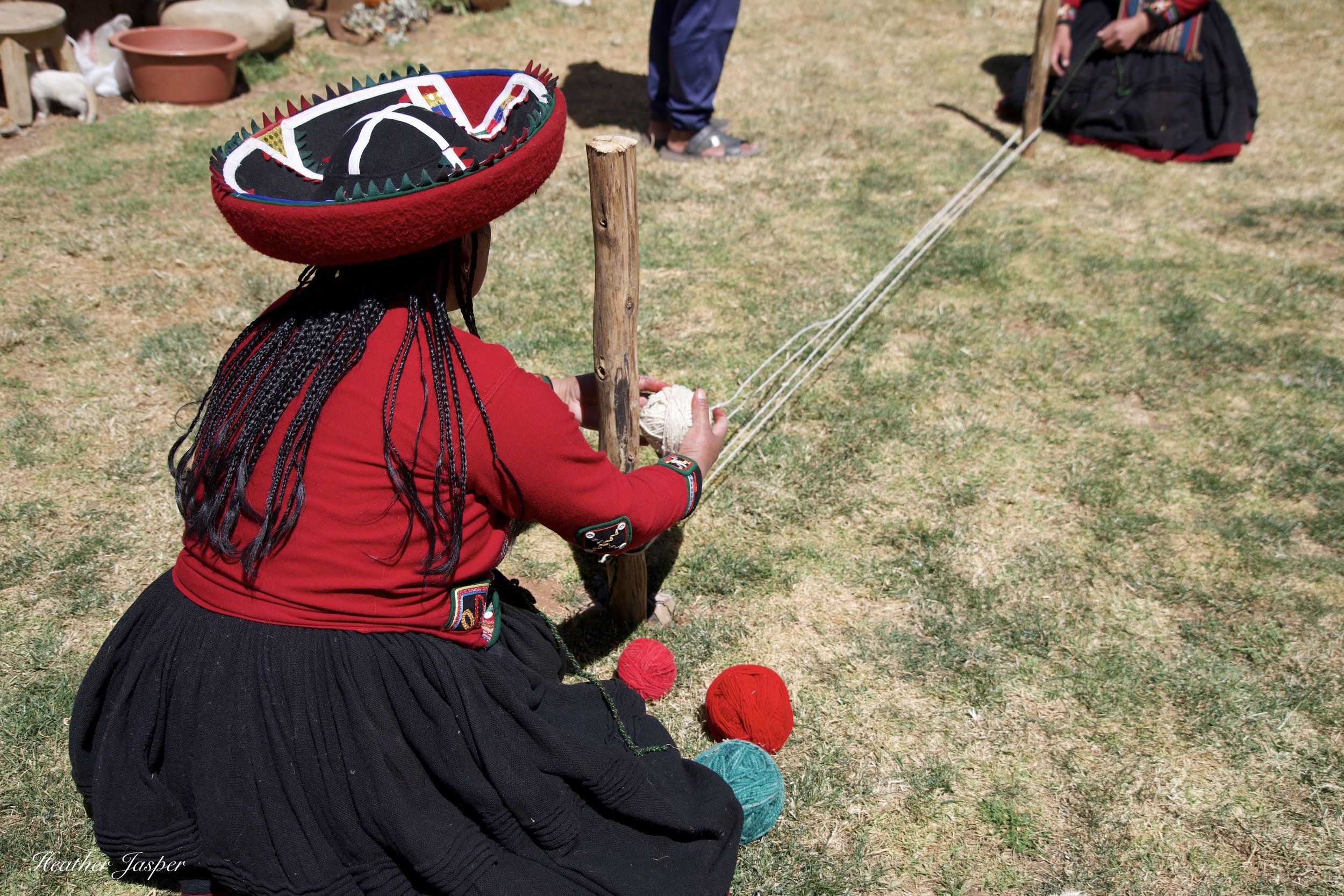
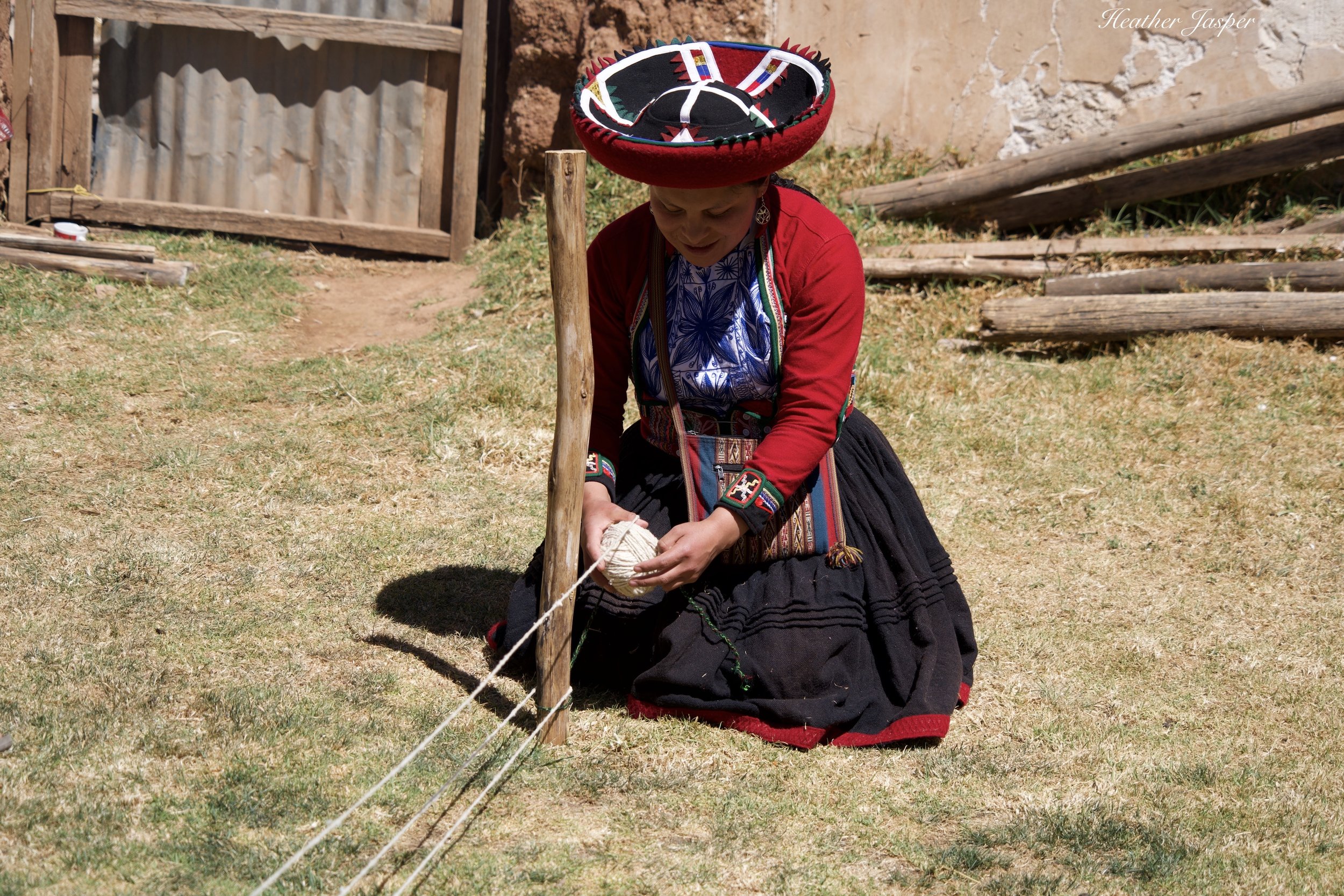
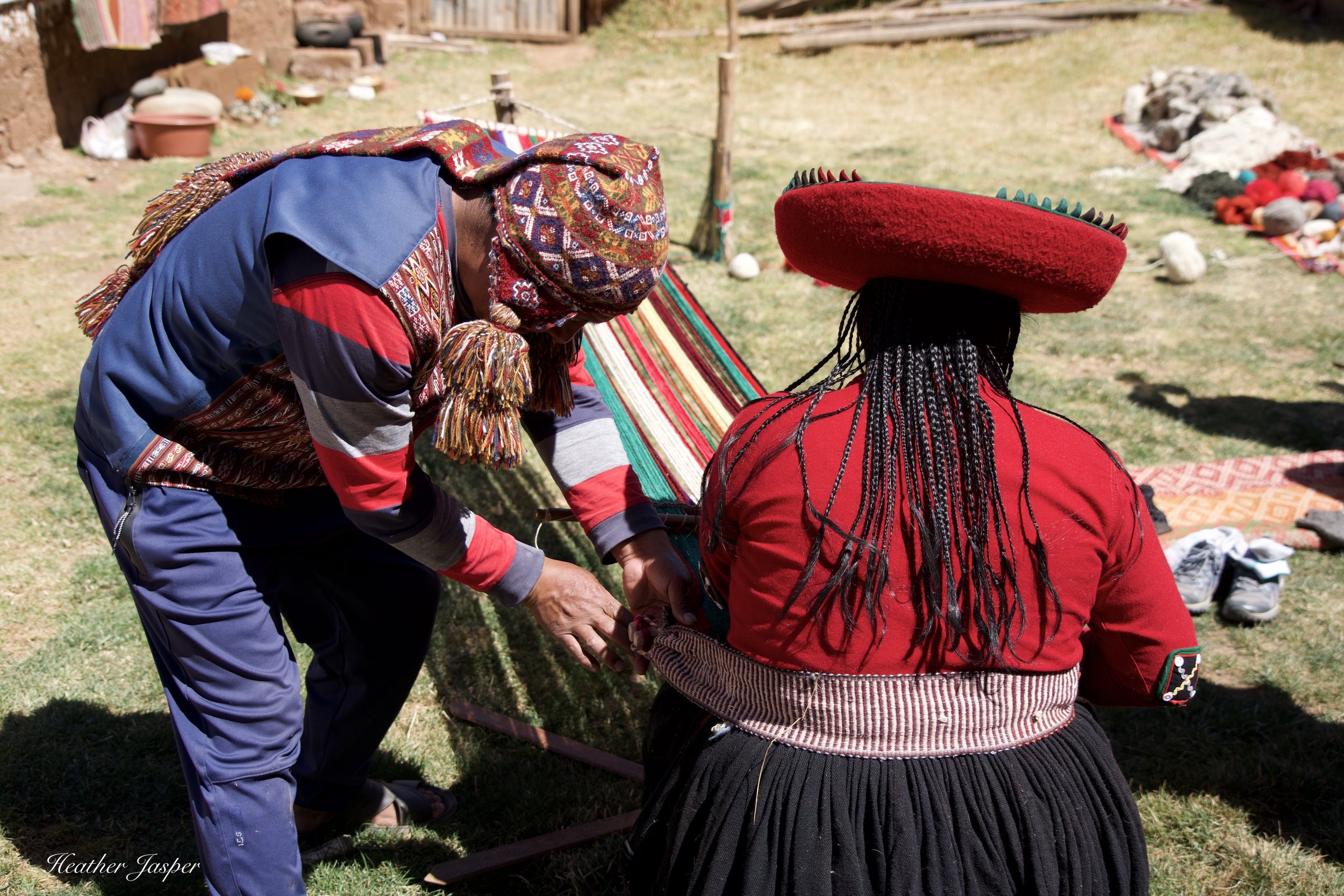

Erlinda’s husband Daniel
Daniel helped here and there with Erlinda and Karen’s demonstration and he kept an eye on the kitten.
Erlinda knit Daniel’s hat, which is made in such an intricate and complicated way that I can’t begin to explain it. You’ll just have to go to Chinchero and see for yourself! (A photo of Erlinda knitting another one is in the series of photos above).


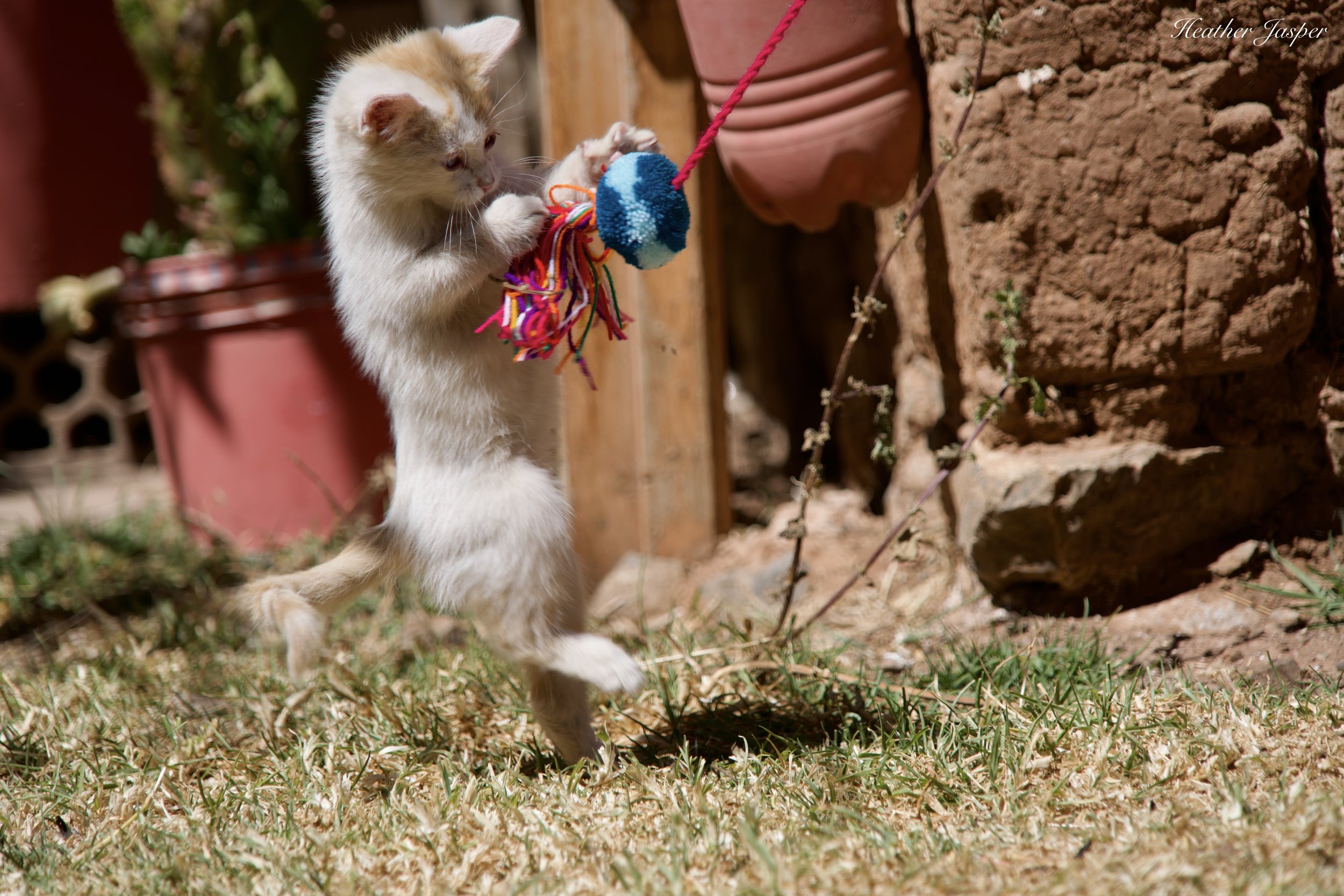
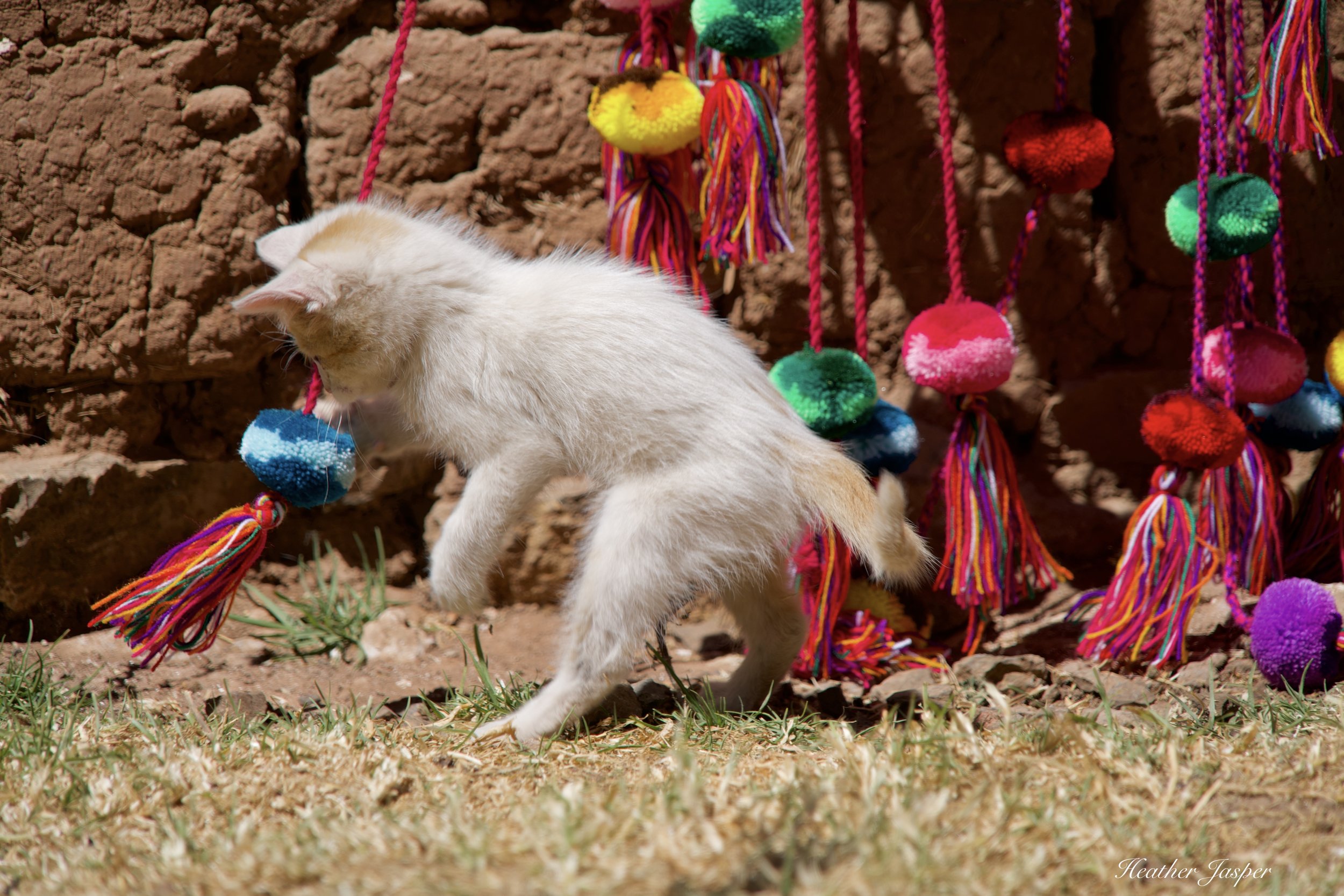
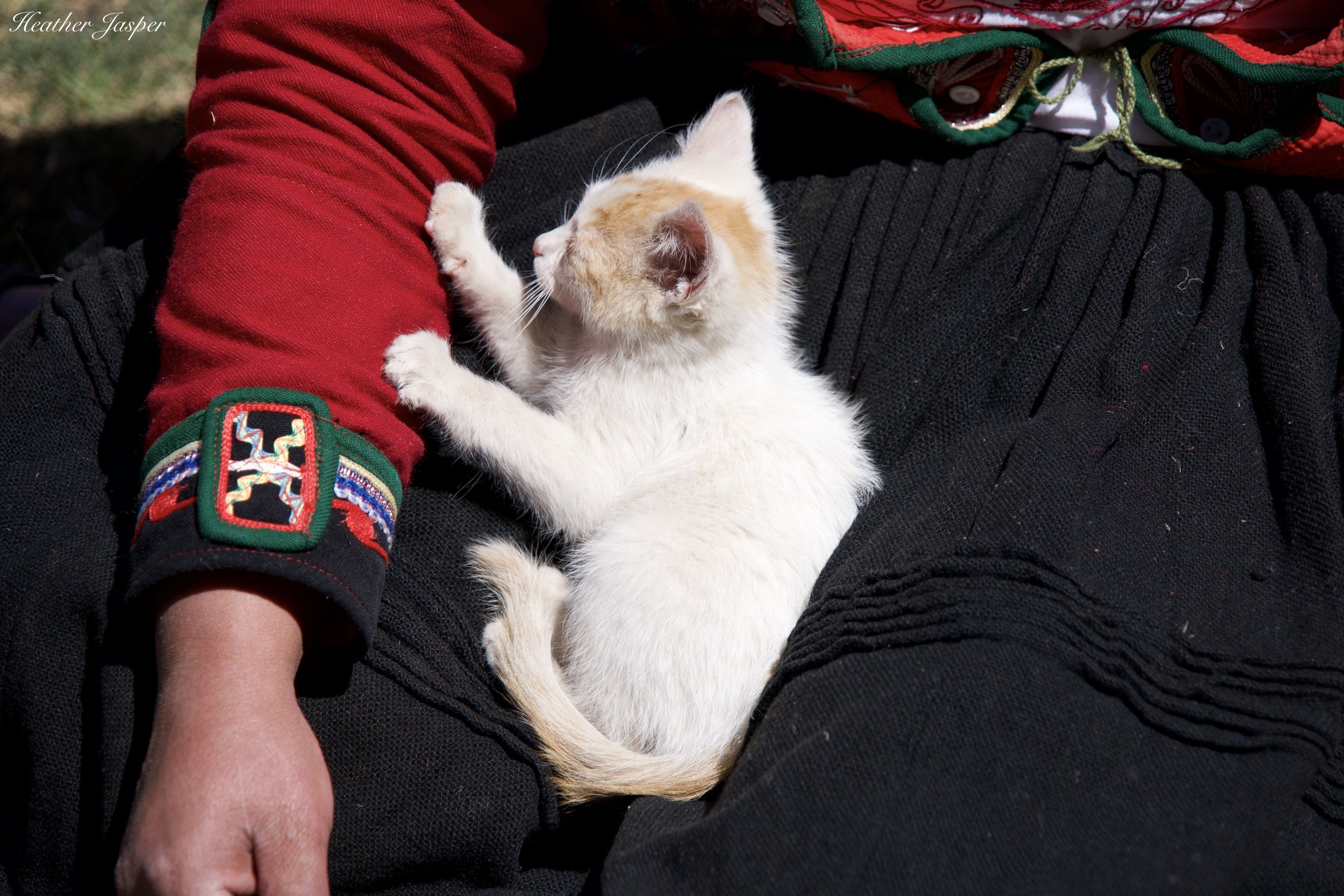
The kitten
I really tried to pay attention to Erlinda’s explanation of how to use a back-strap loom. She taught me the names in Quechua of each part of the loom. All I remember is that the tool made from a llama’s bone is called rooq’i. The kitten was just too distracting!
The visit to Erlinda’s home was arranged by Hannah Jenkinson, who was looking for blankets. Hannah’s shop HJK carries shoes made with blankets like the ones that Erlinda and Karen make.
When you’re in Cusco, you’ll often see women with llamas, alpacas and lambs who pose for photo with tourists. The women with round, red hats are from Chinchero.
Many women are from Quispicanchis or Paucartambo and they have flat hats with fringe hanging down around the edges. These are all models and they accept tips for posing for photos. I always give s/5 PEN (less than $2 USD) to each woman when I take their photos.
The Textile Center
The Center for Traditional Textiles of Cusco (Cusco region, not city) is in Chinchero. Unless you have a personal connection in Umasbamba or with Erlinda, this is the best place to learn about textiles in Chinchero. The photos and books above are at this center.
Chinchero is on a high plateau between Cusco and the Sacred Valley.
That’s why it has the best view of the mountains that frame the opposite side of the Sacred Valley. There’s a couple spots along the road from Cusco right before you get to Chinchero where you can stop for mountain views. If you’re driving past Chinchero, stop at the Machu Qolqa archeological site, which also has fantastic views of the mountains and the valley.



